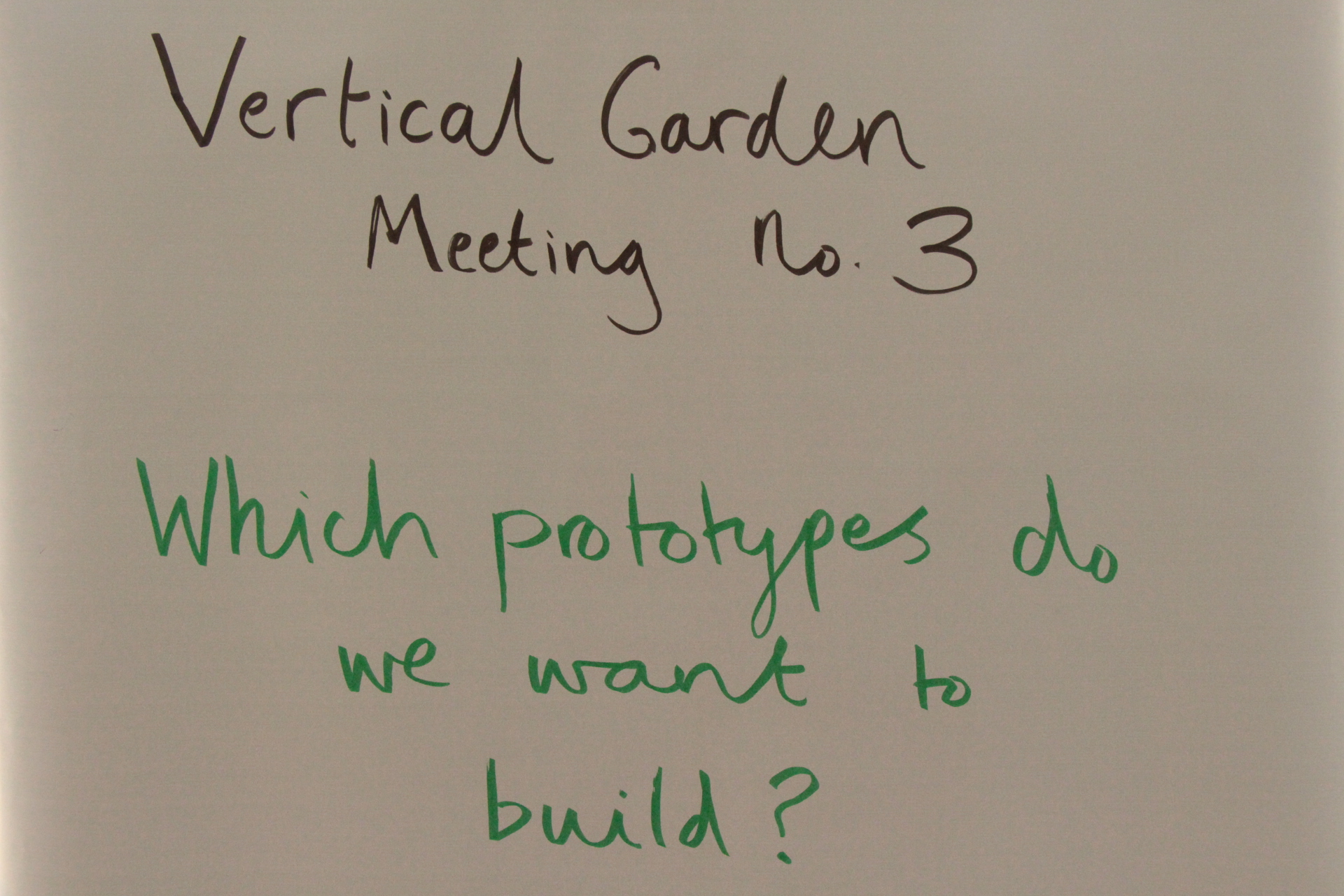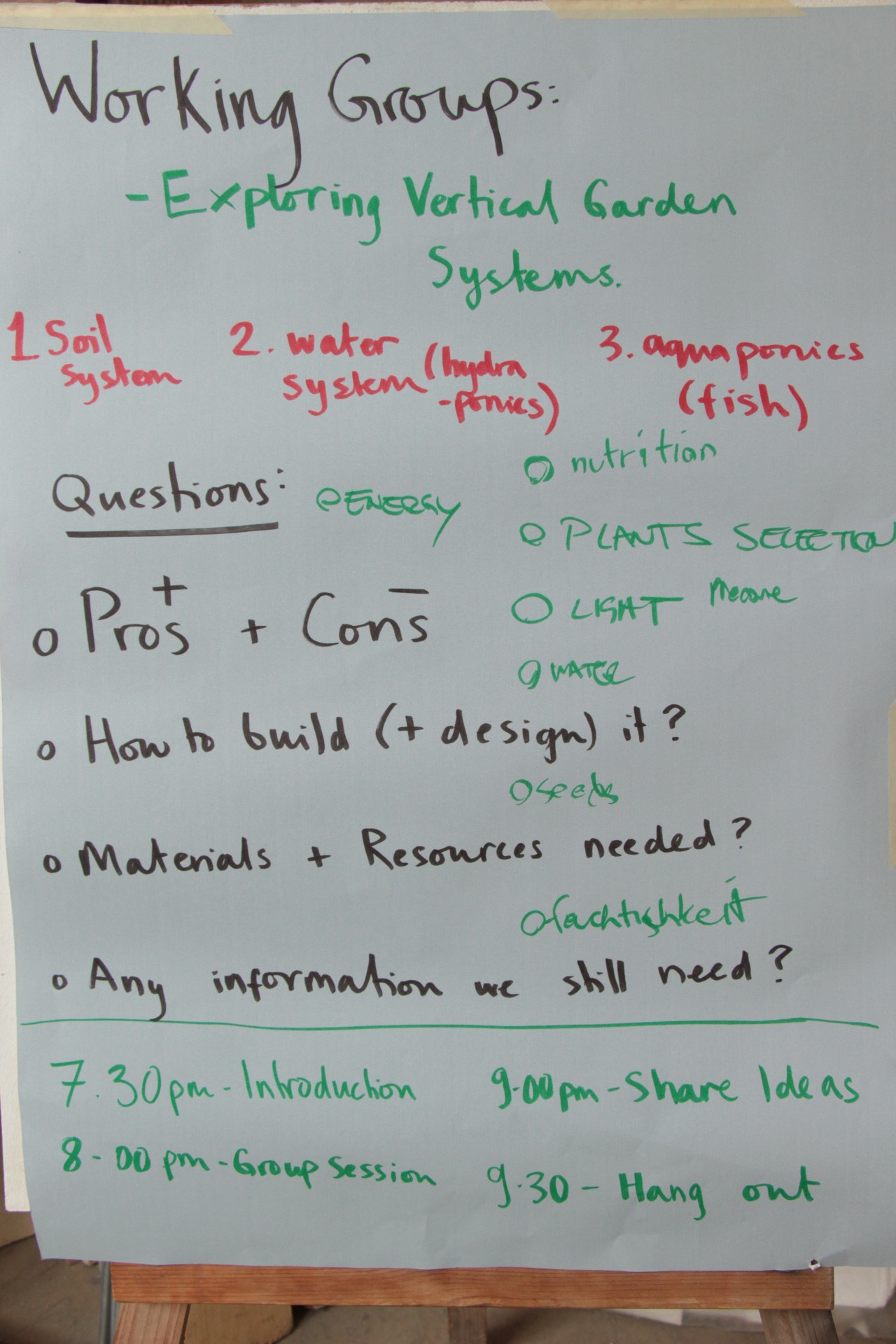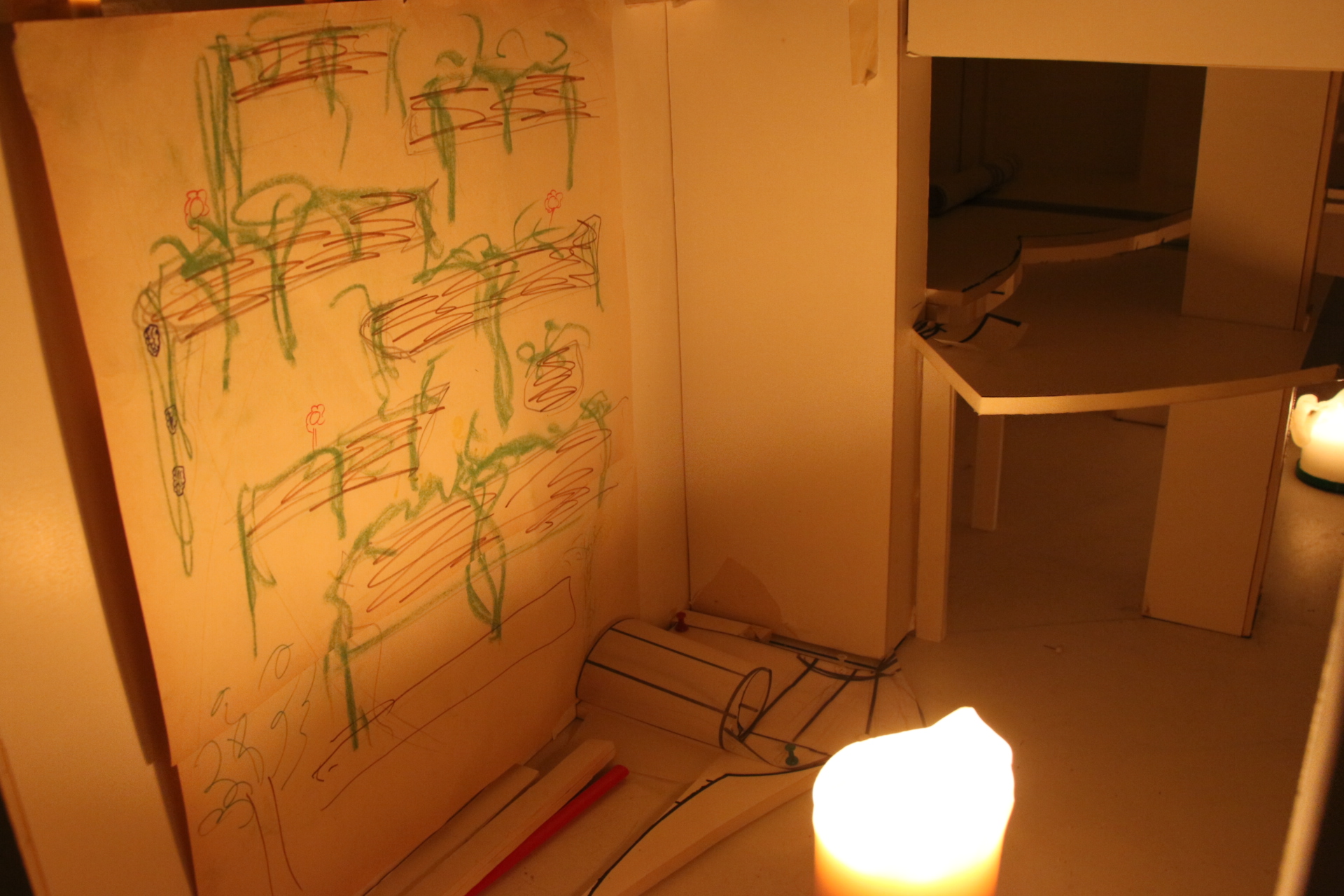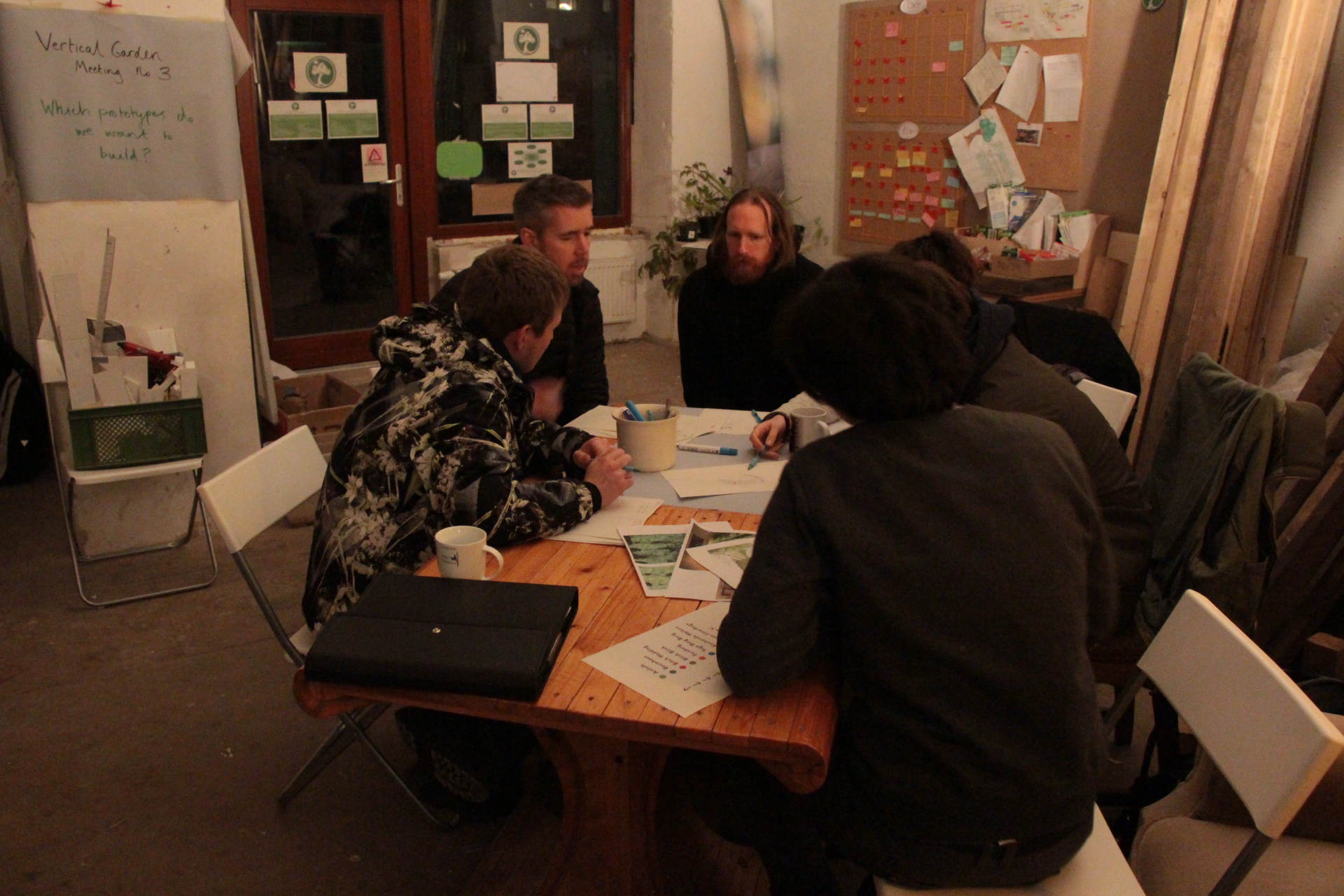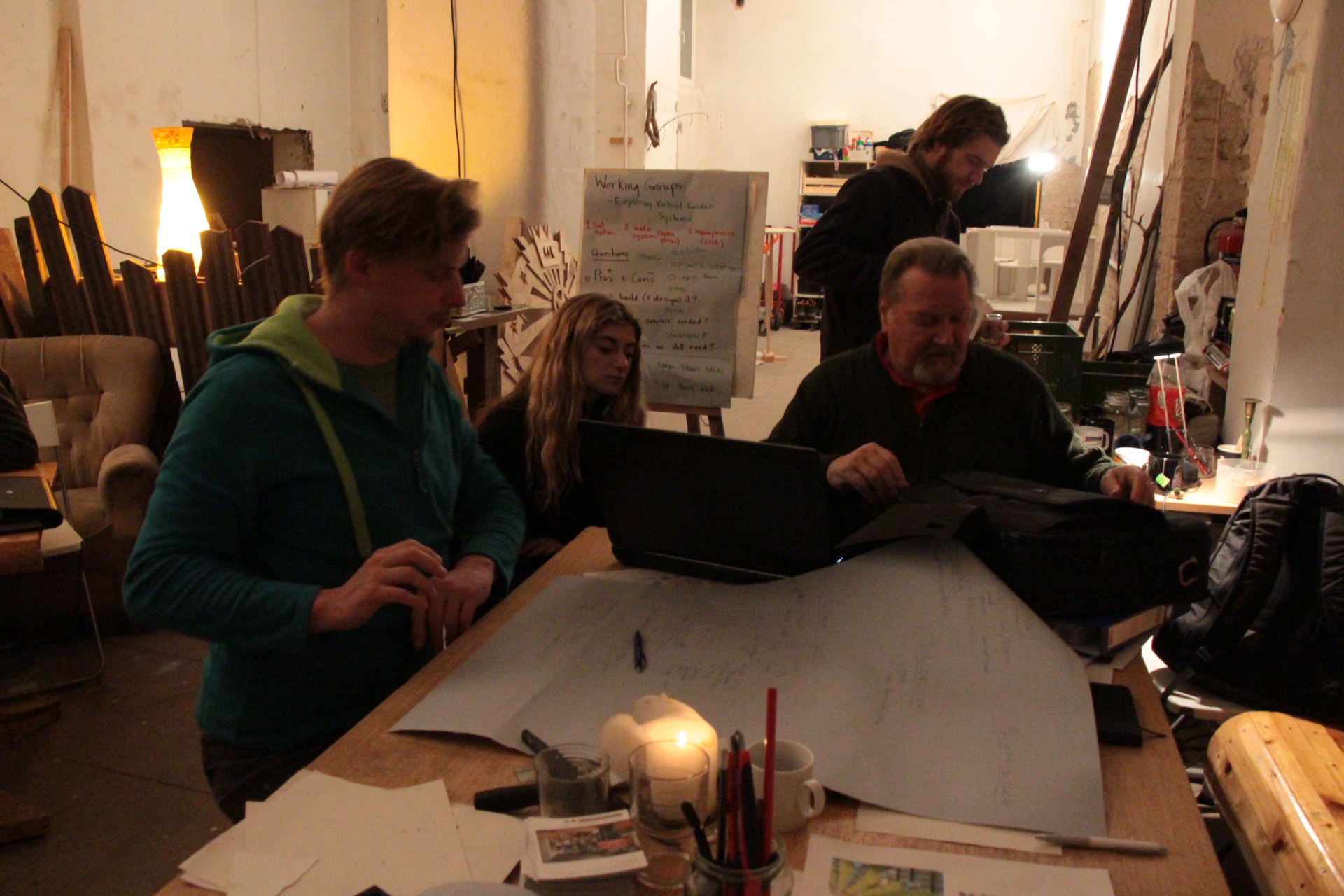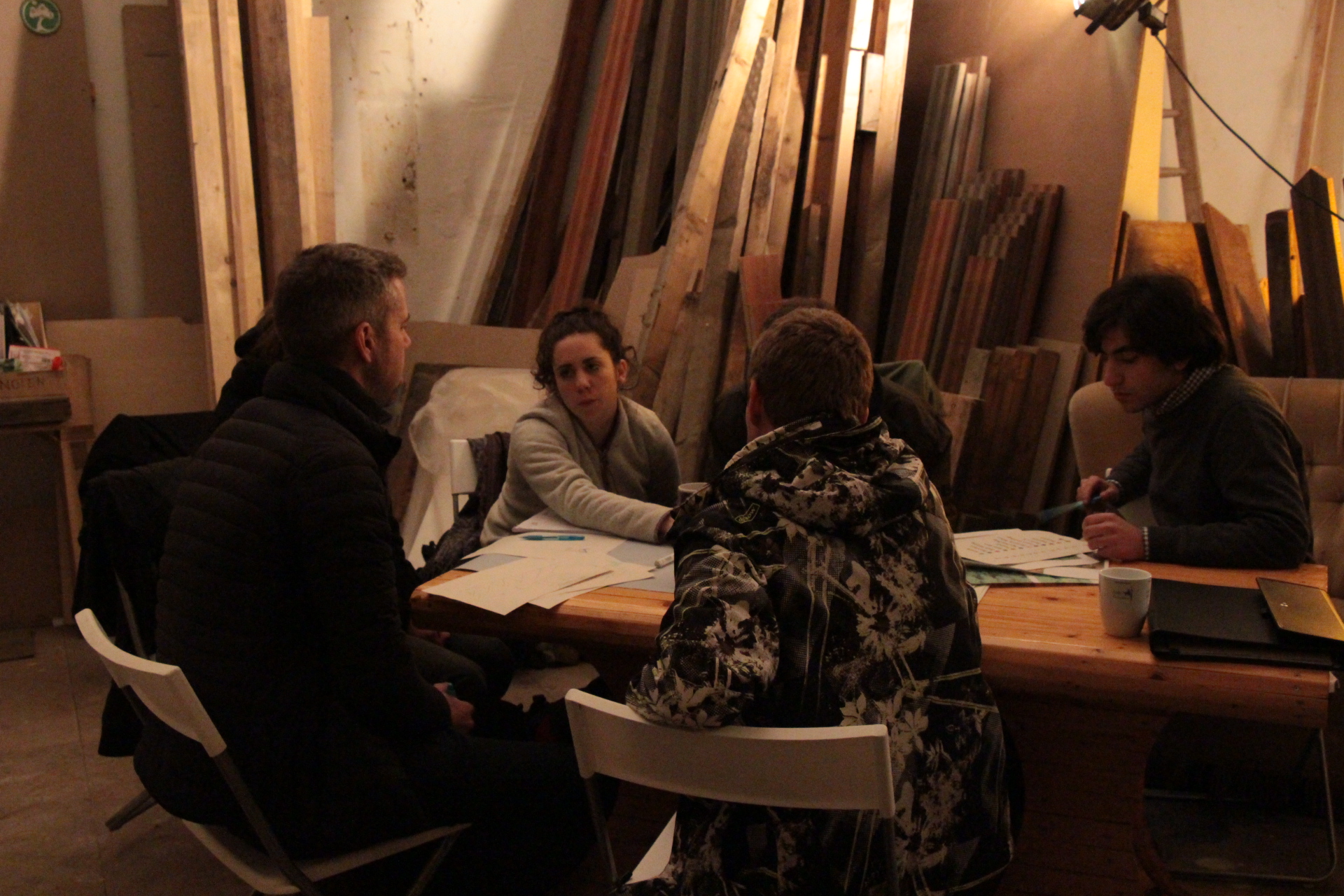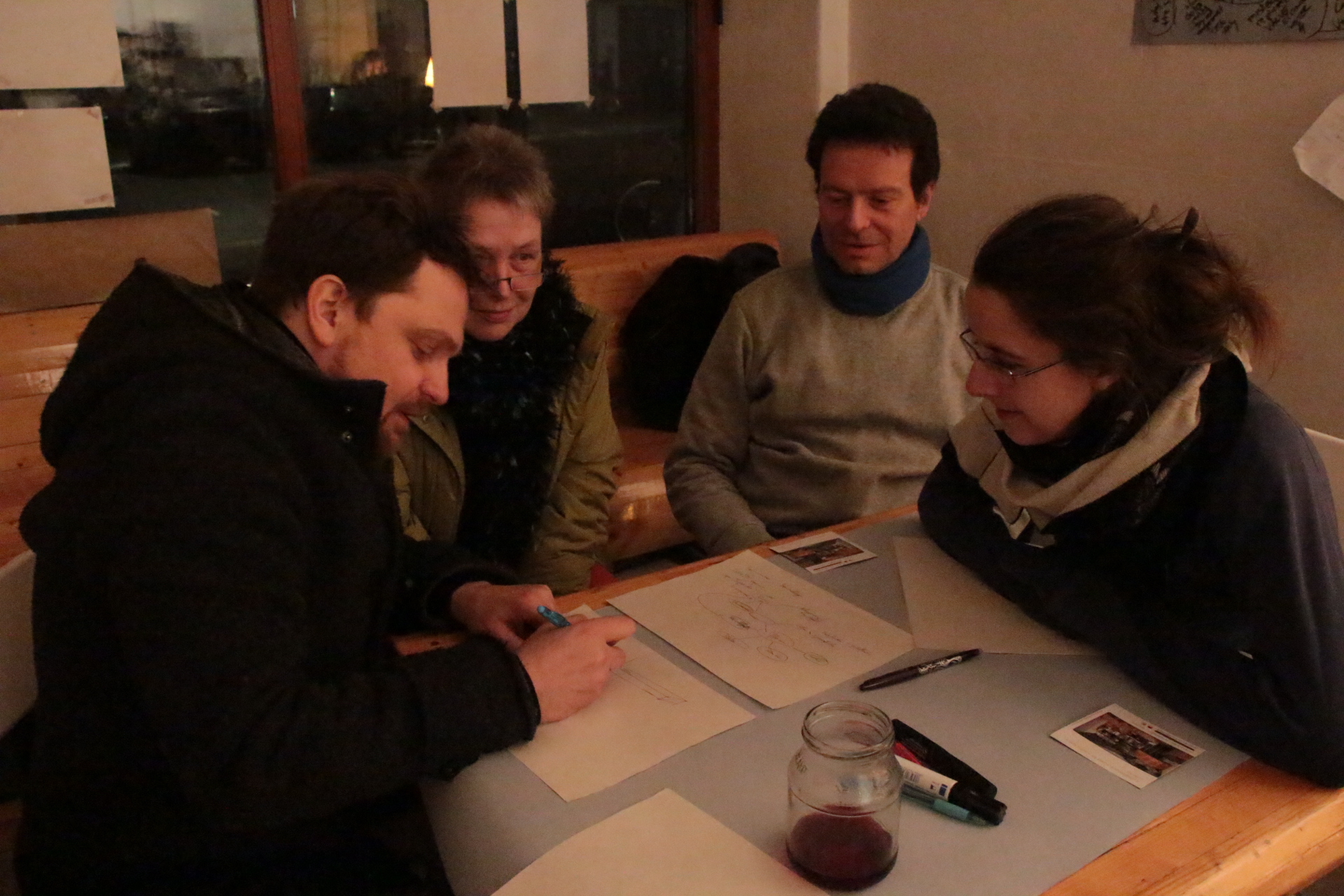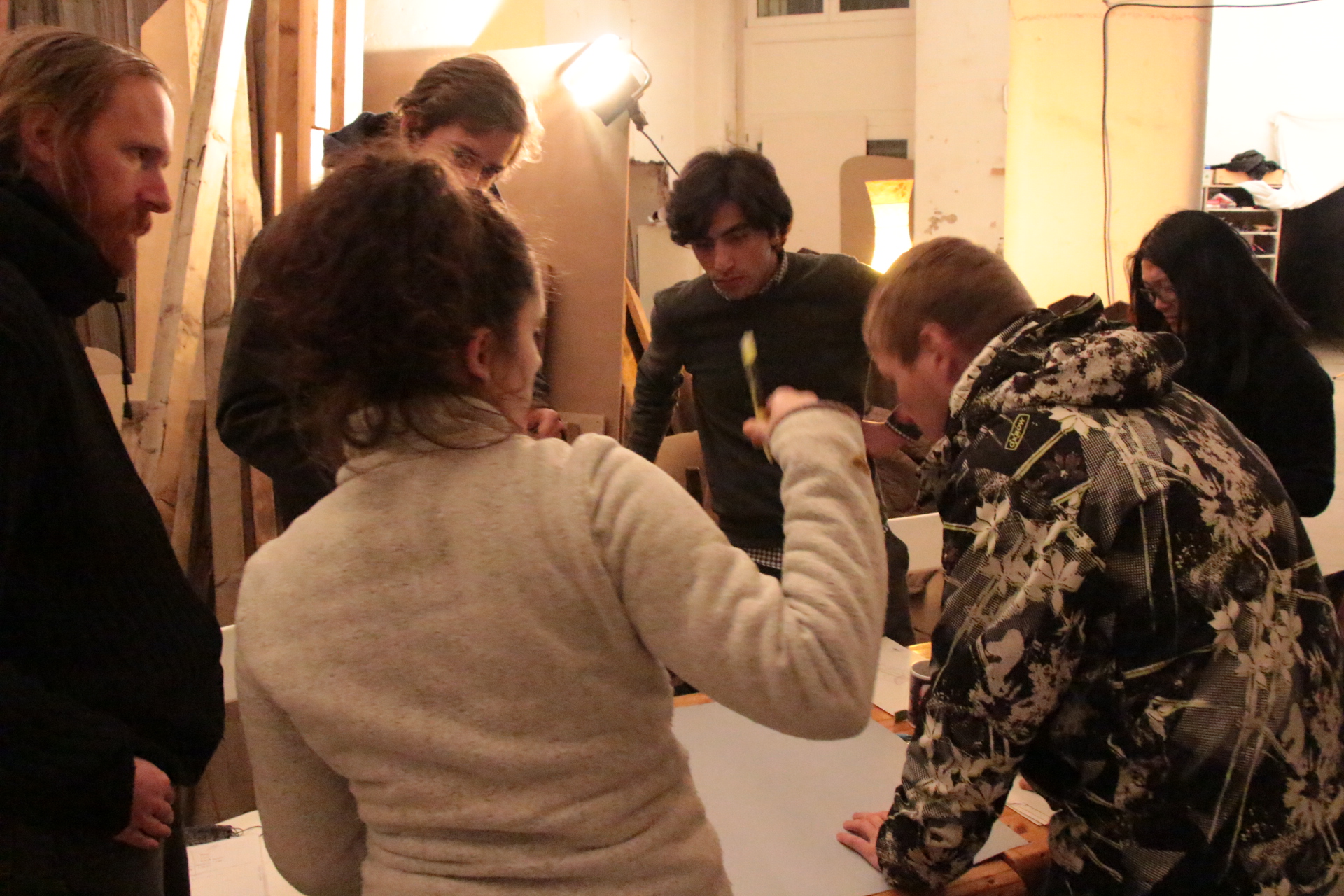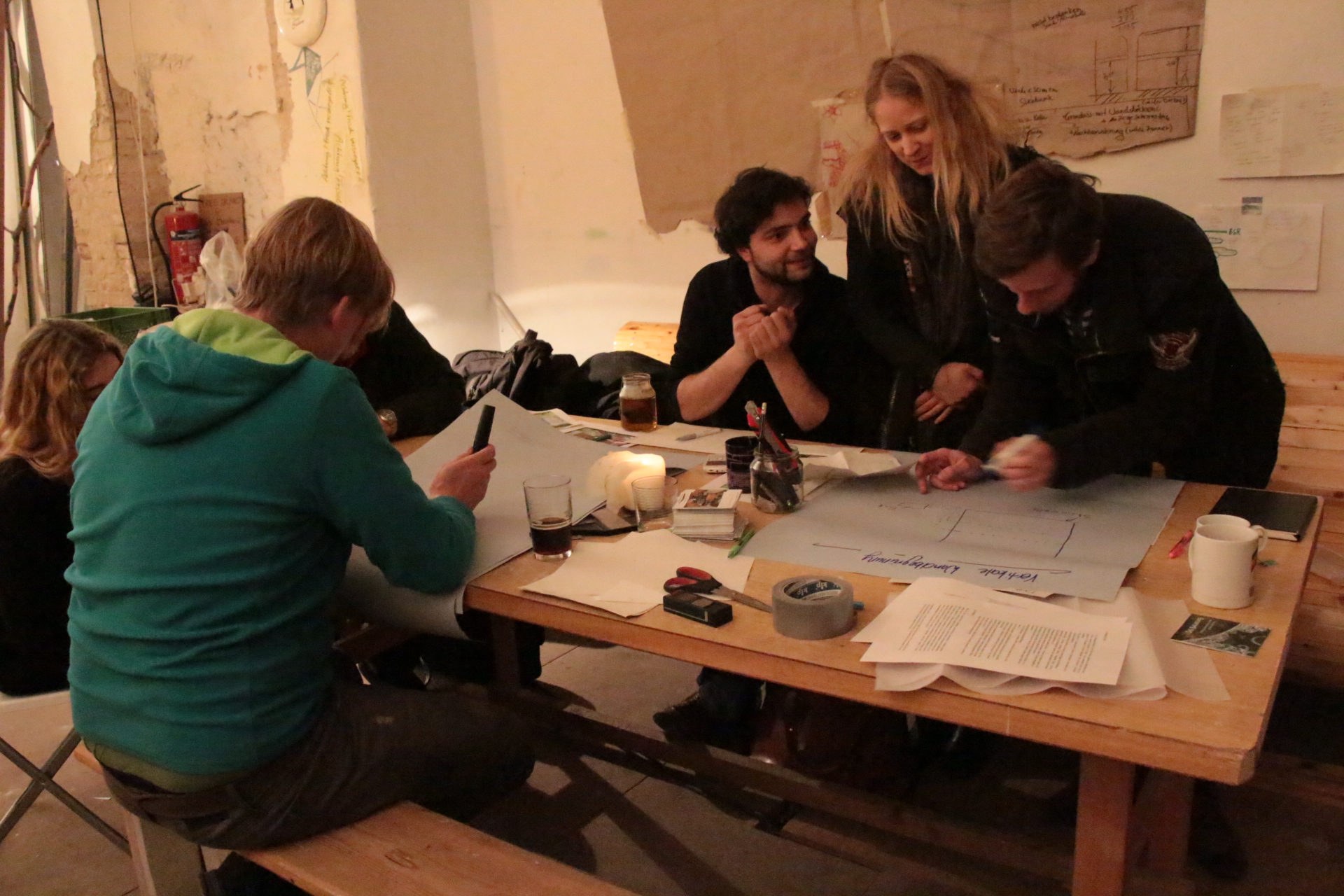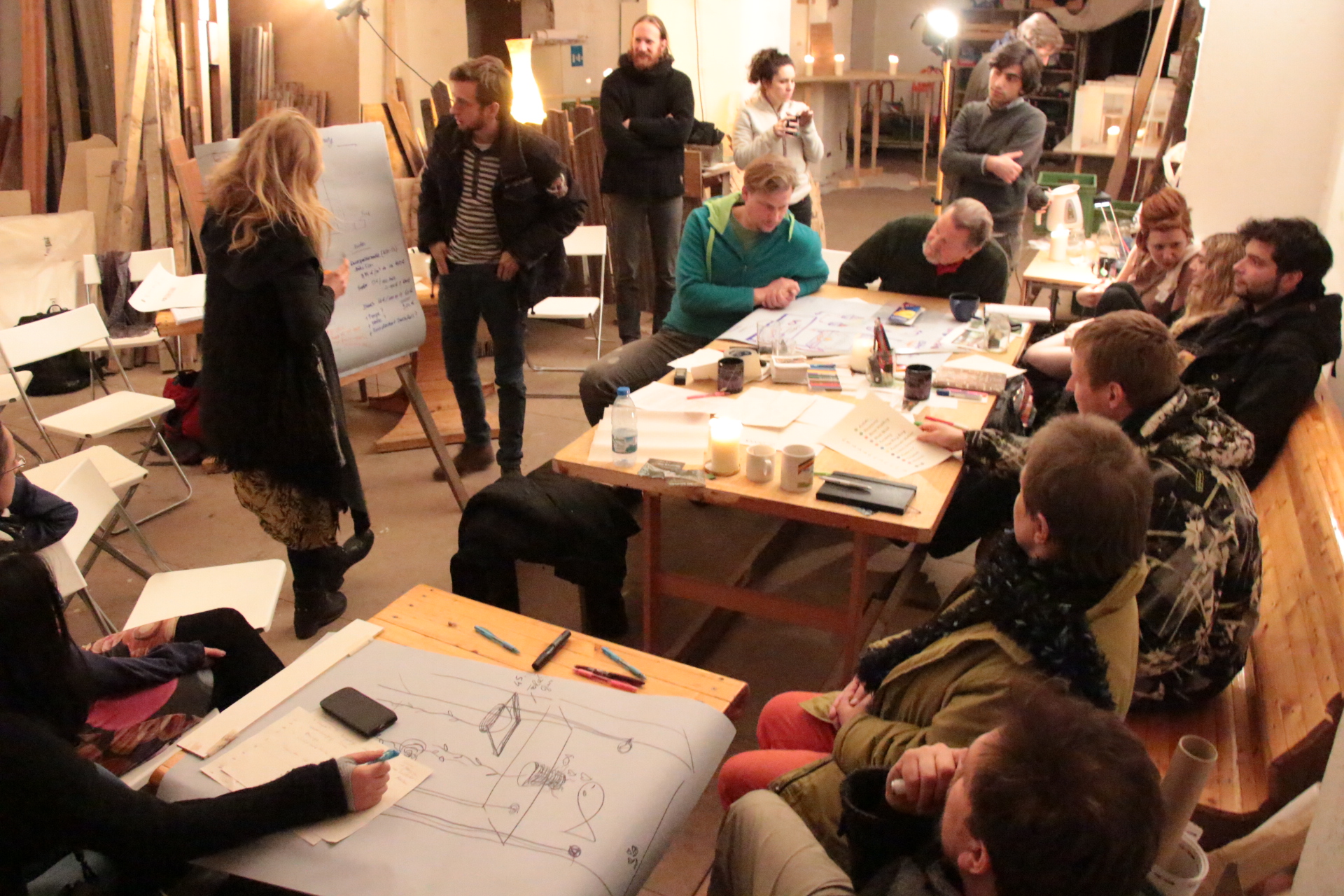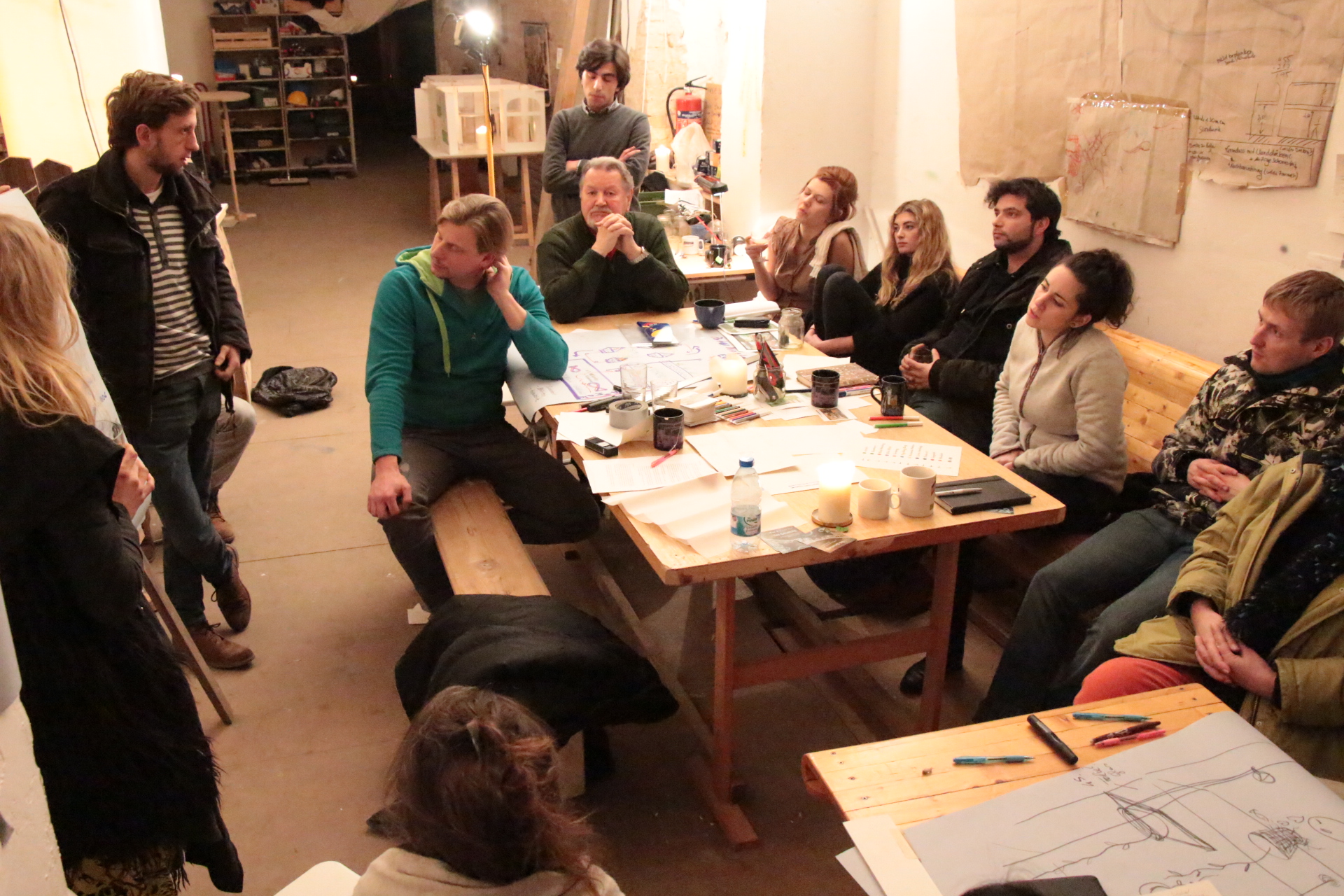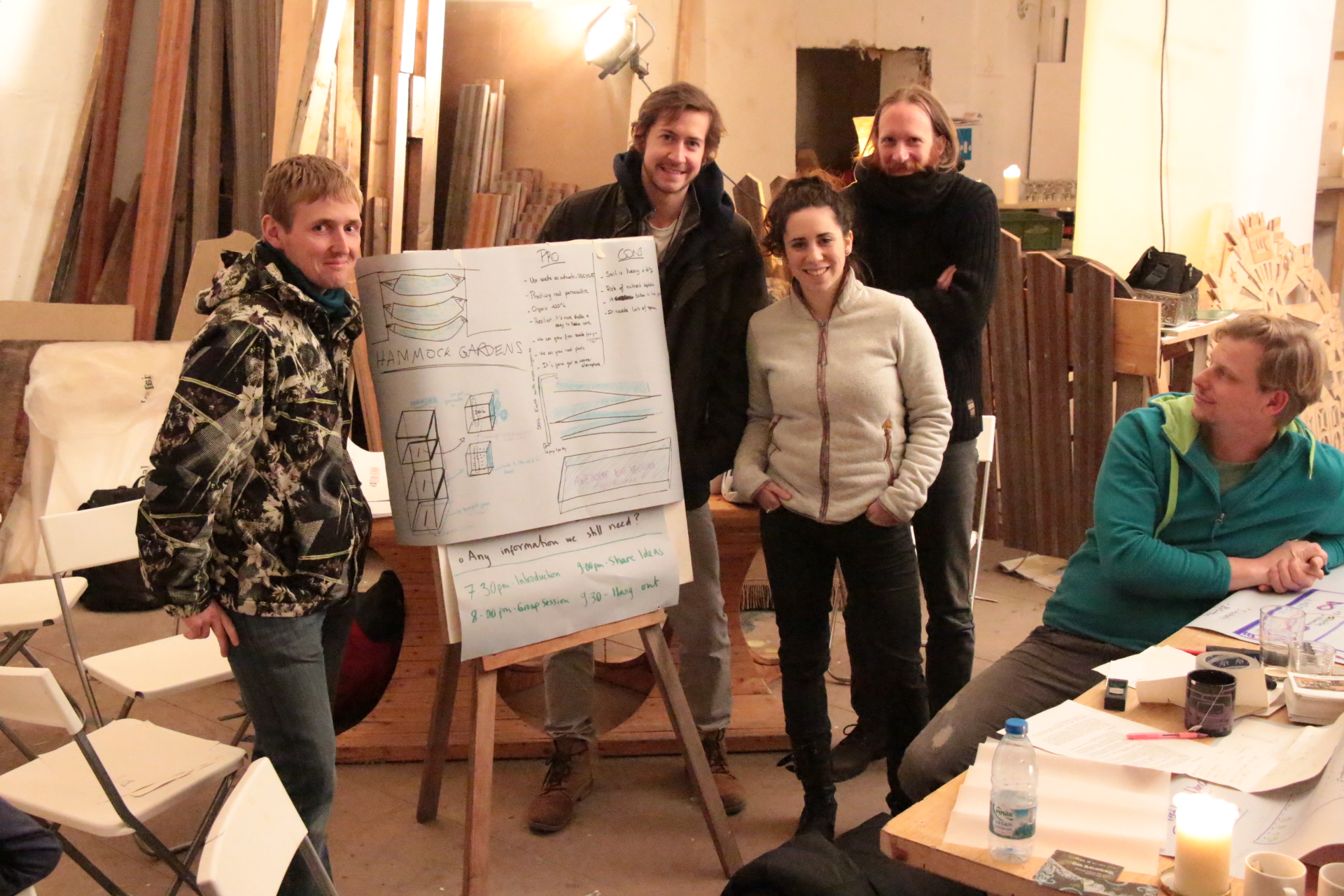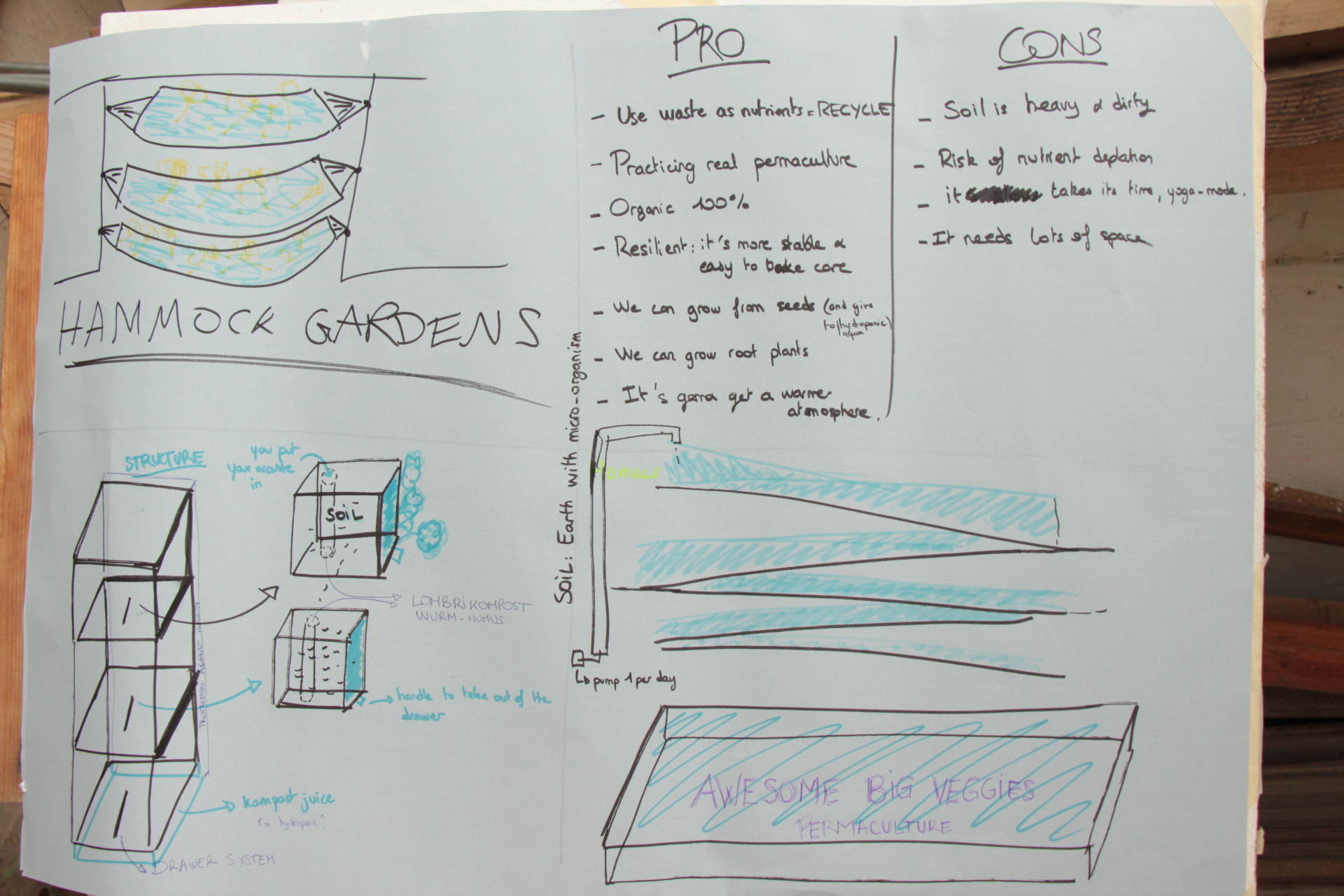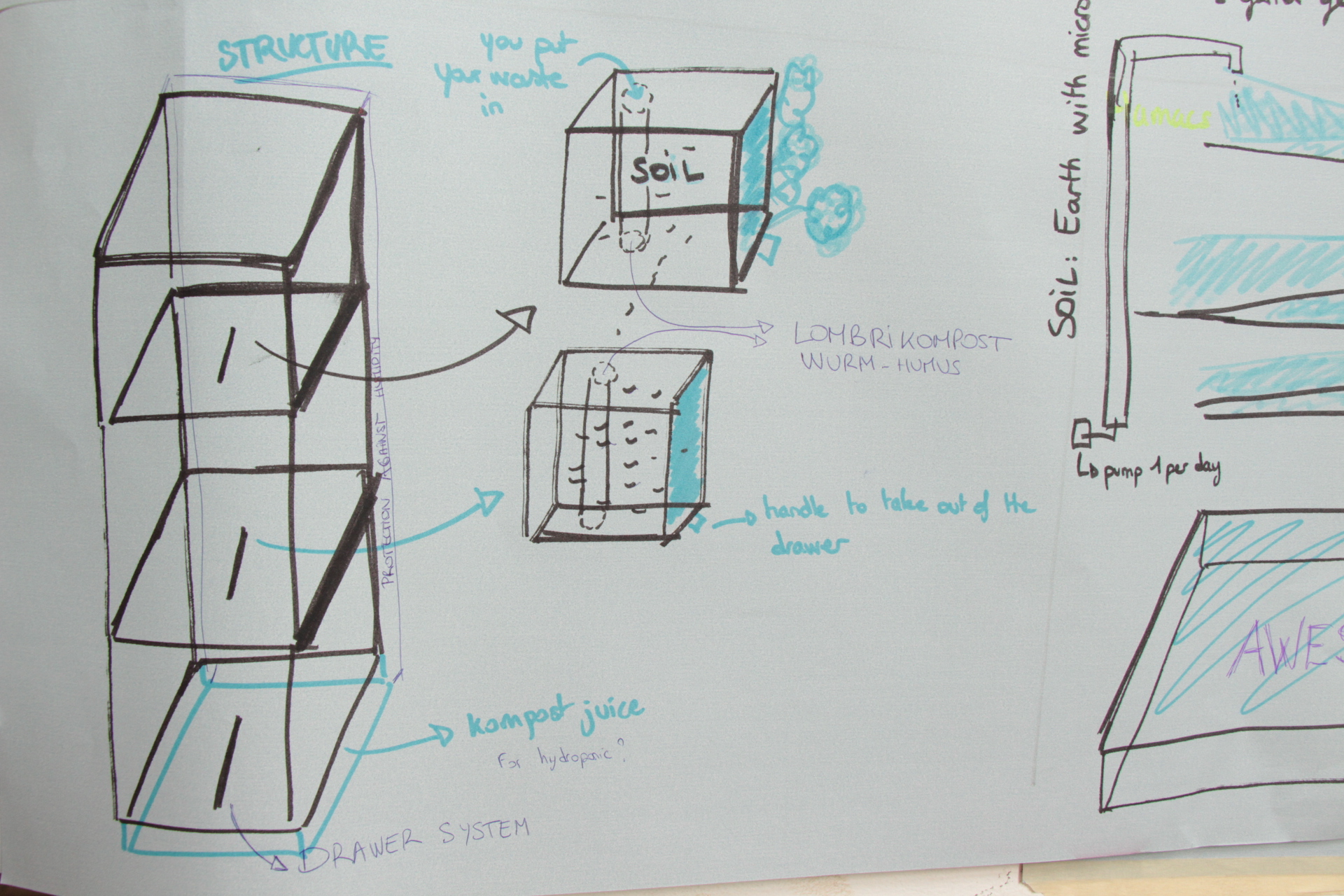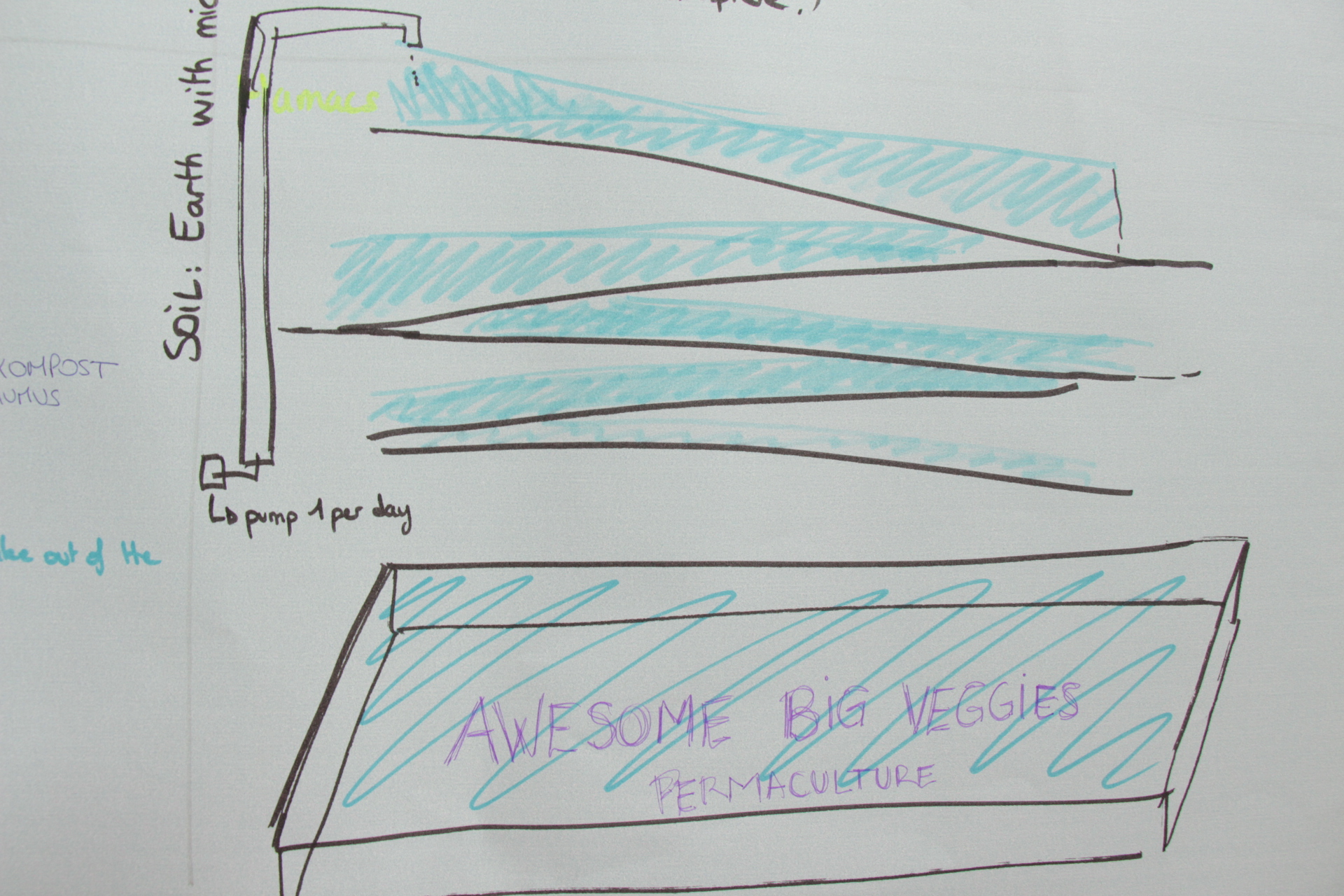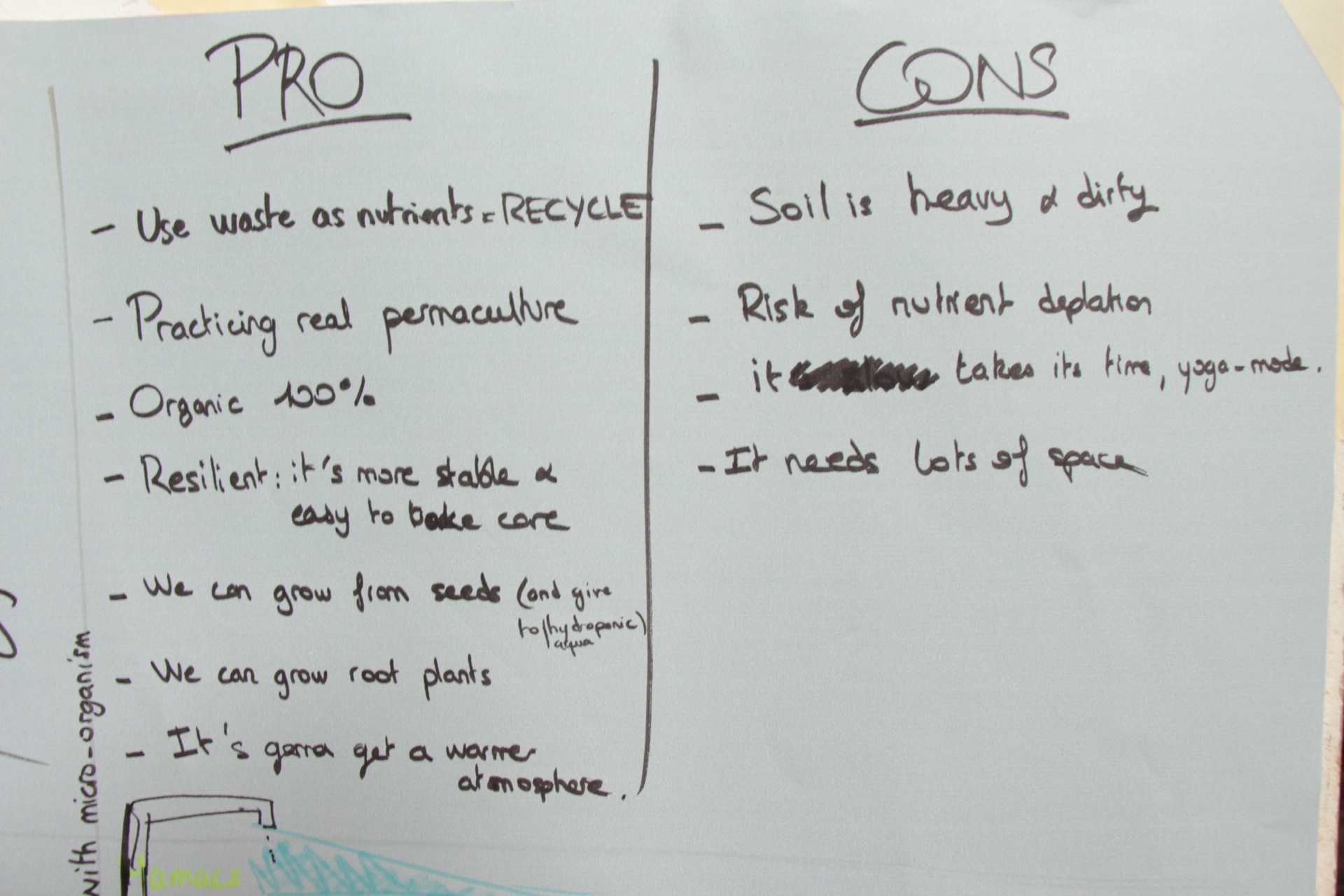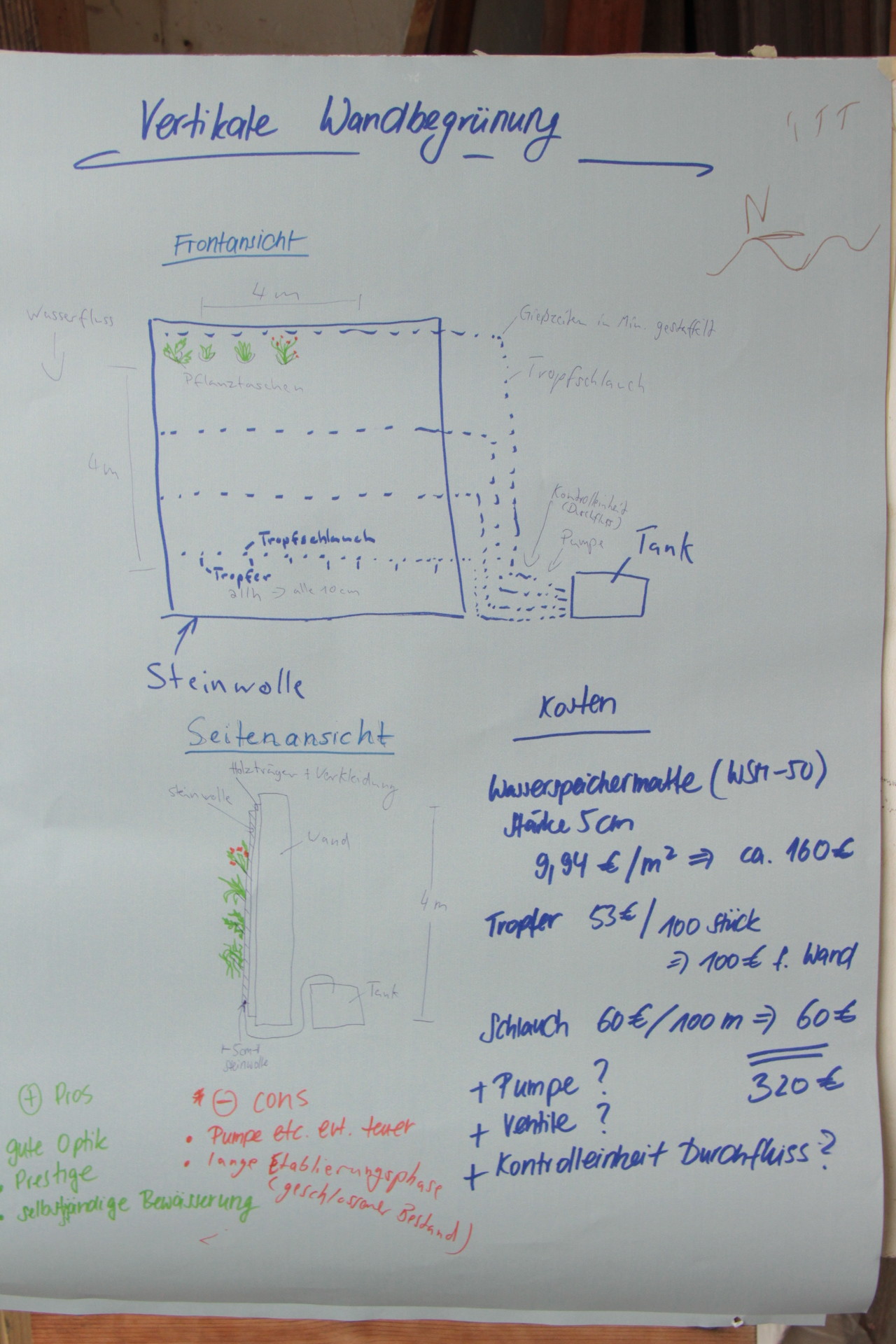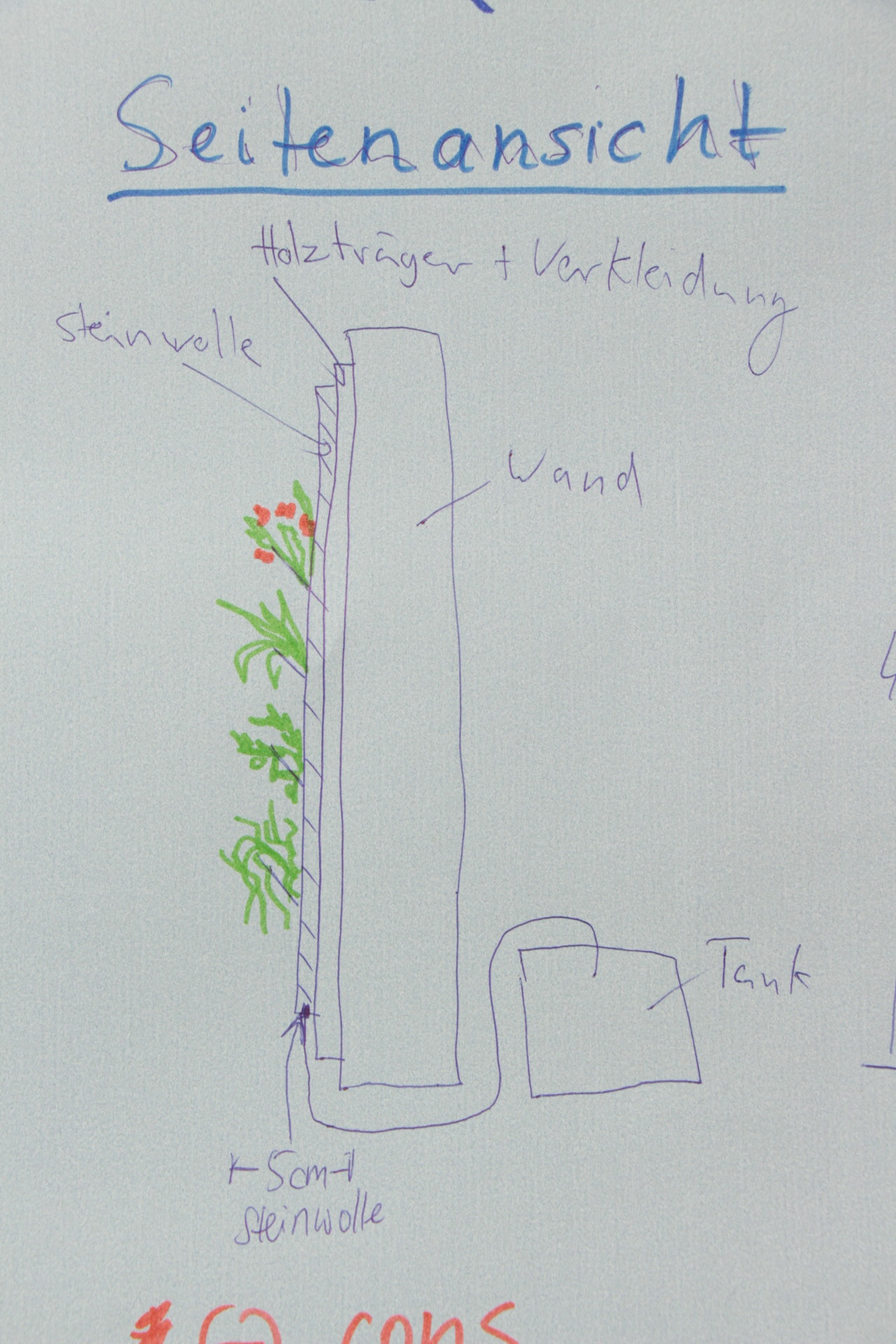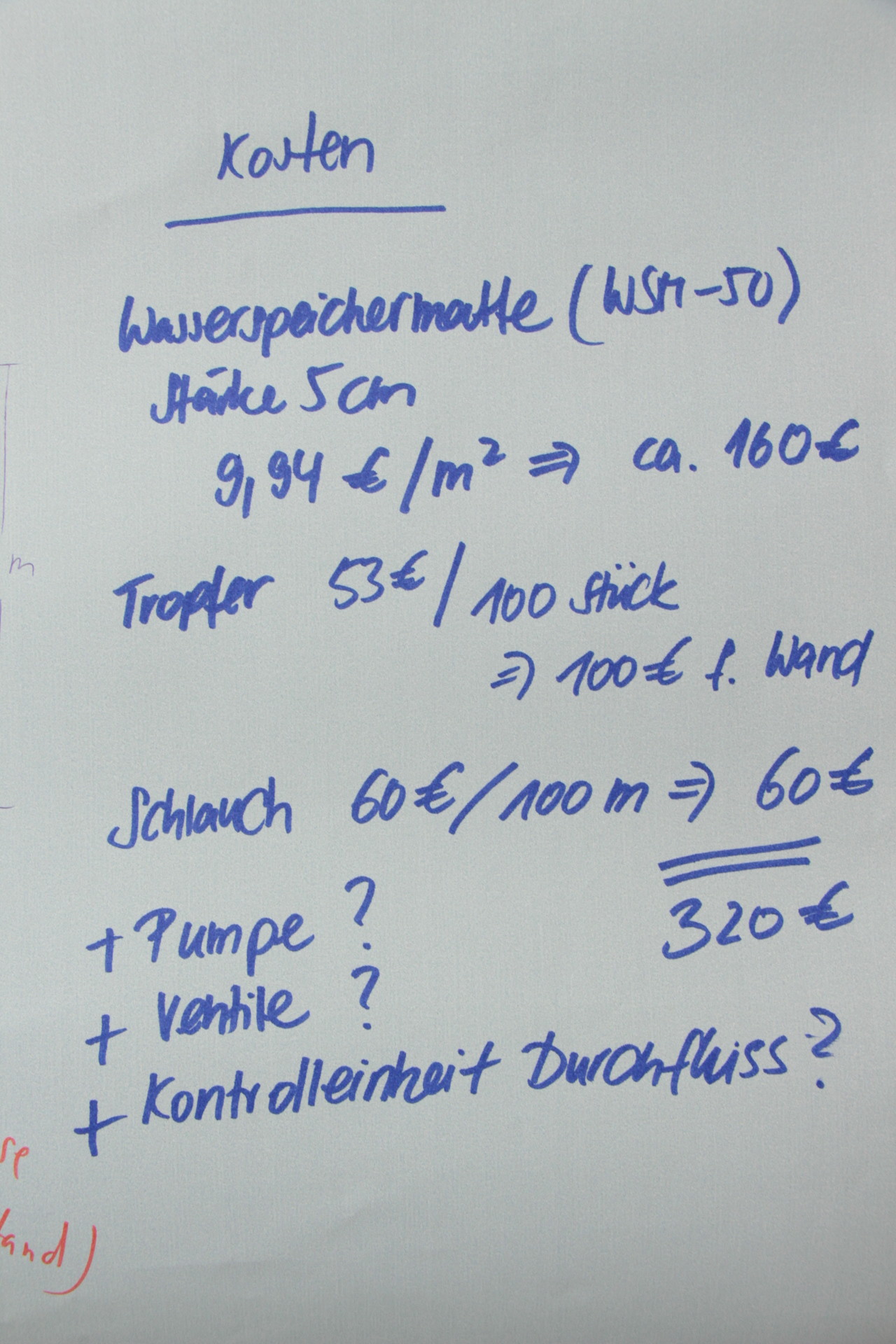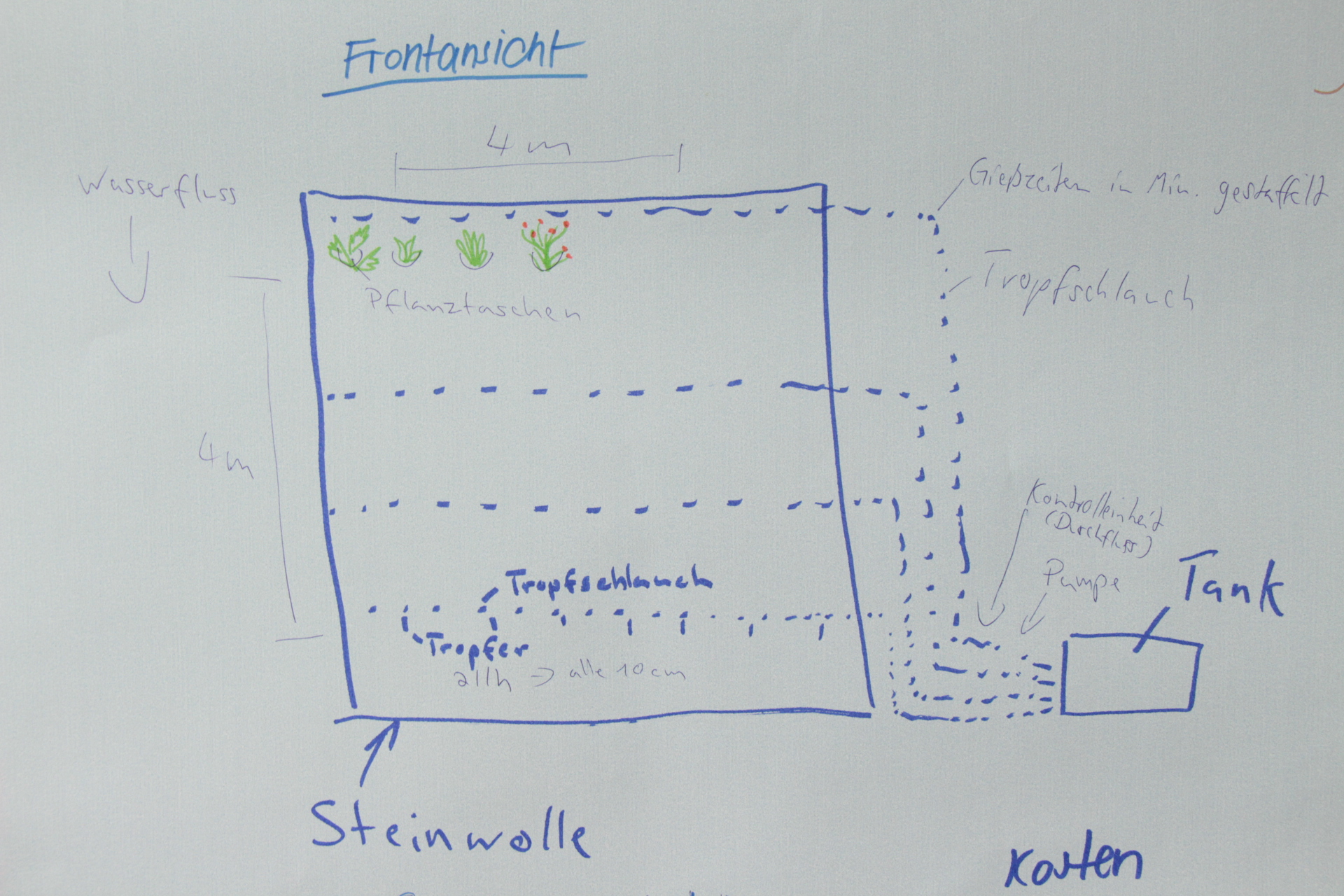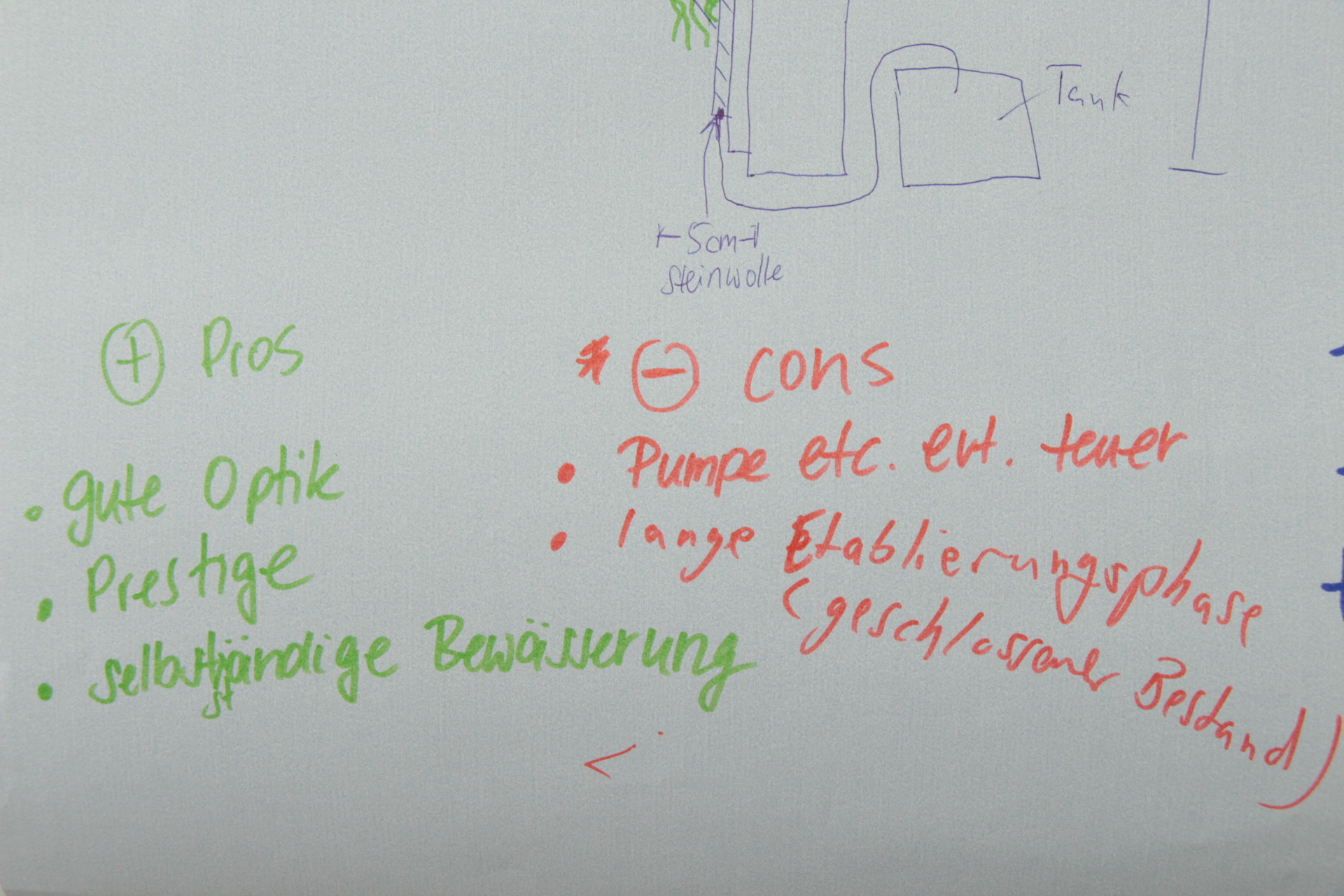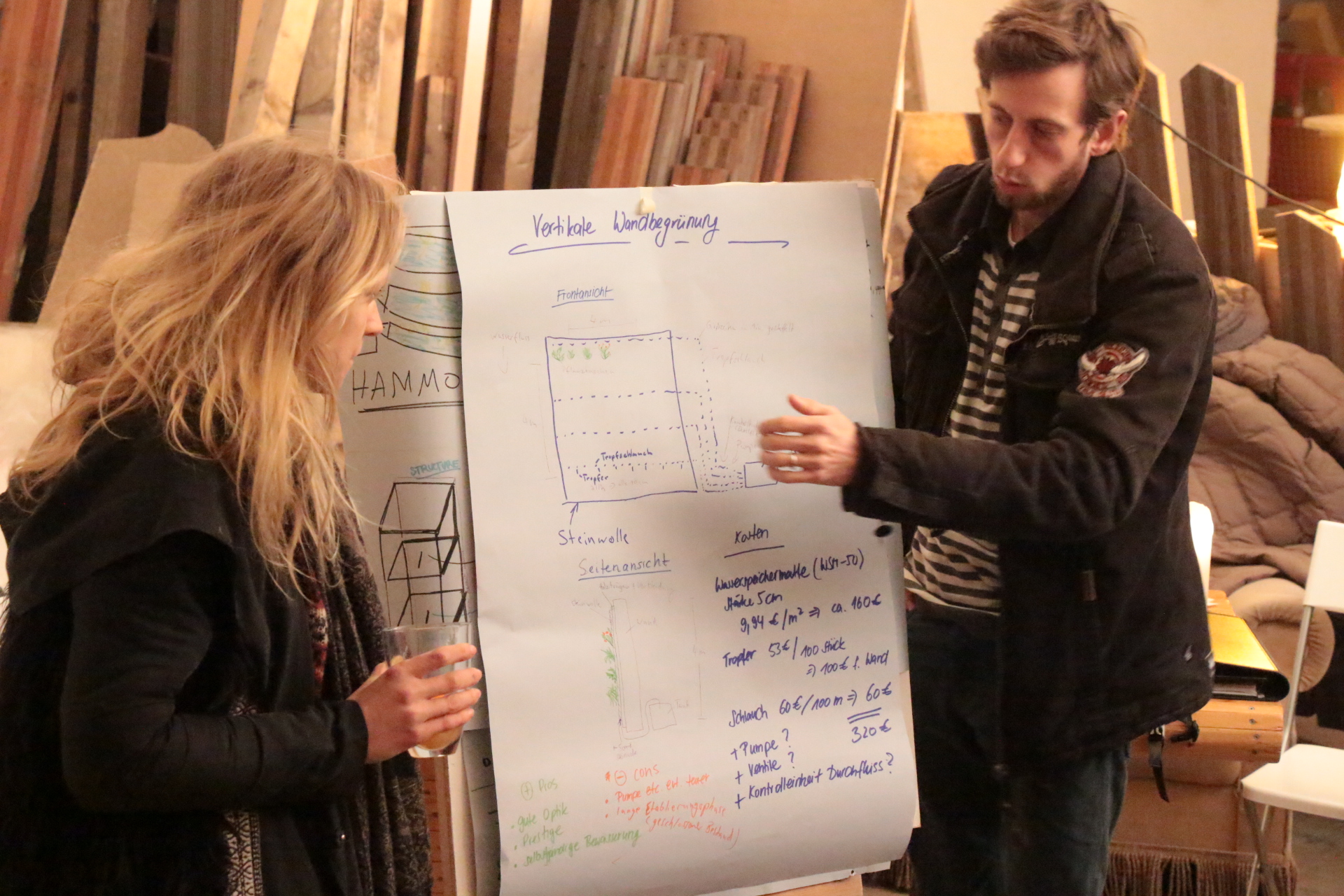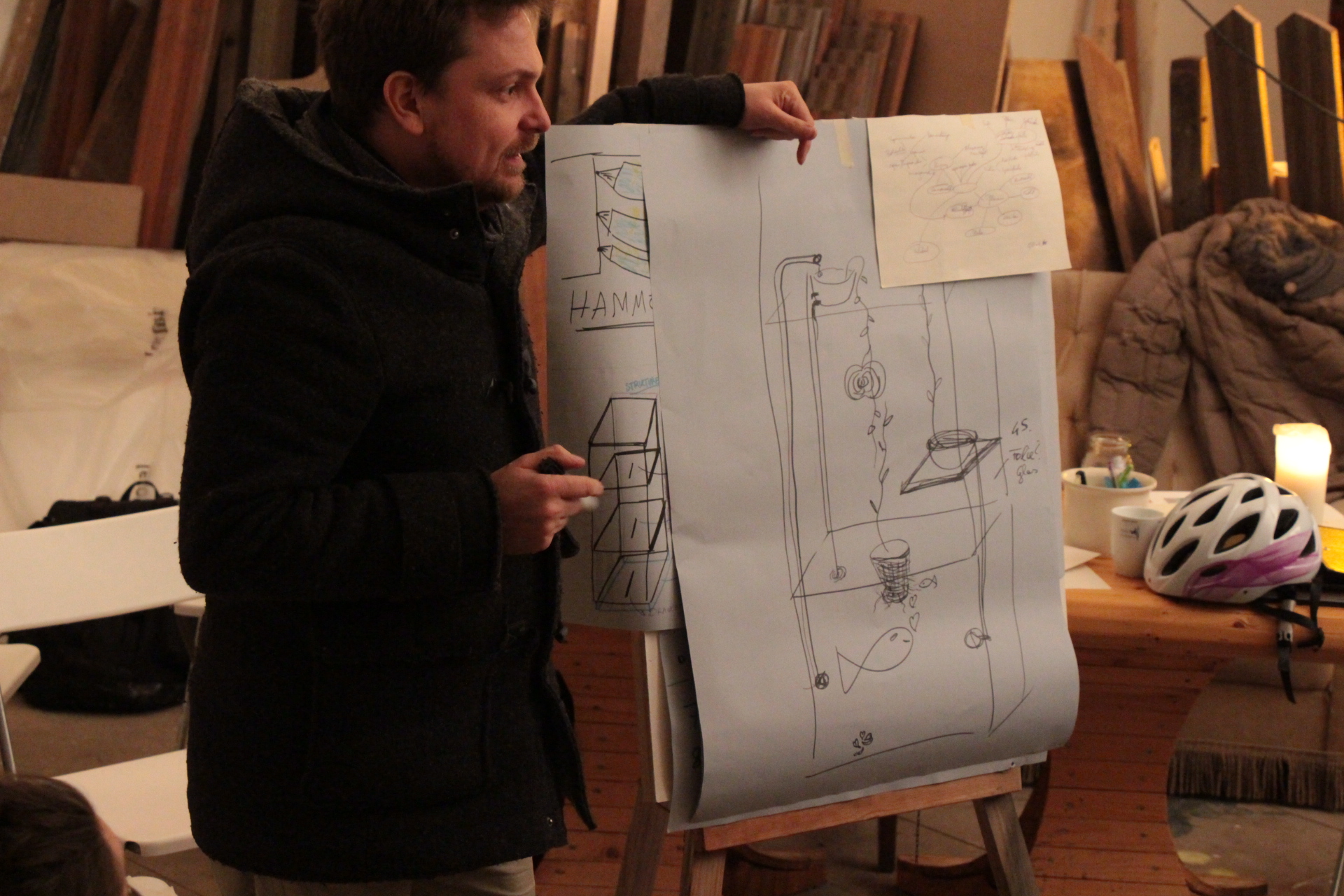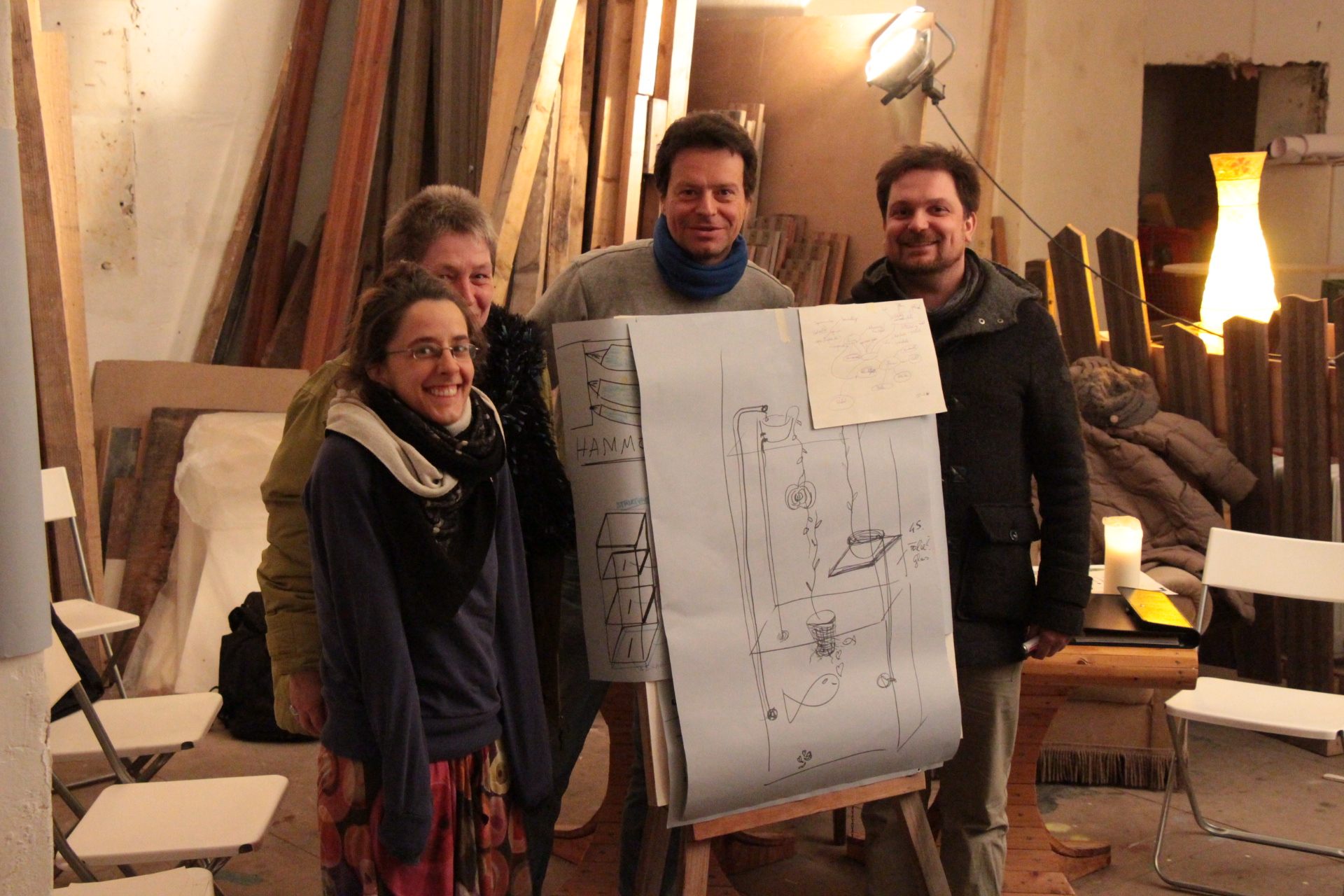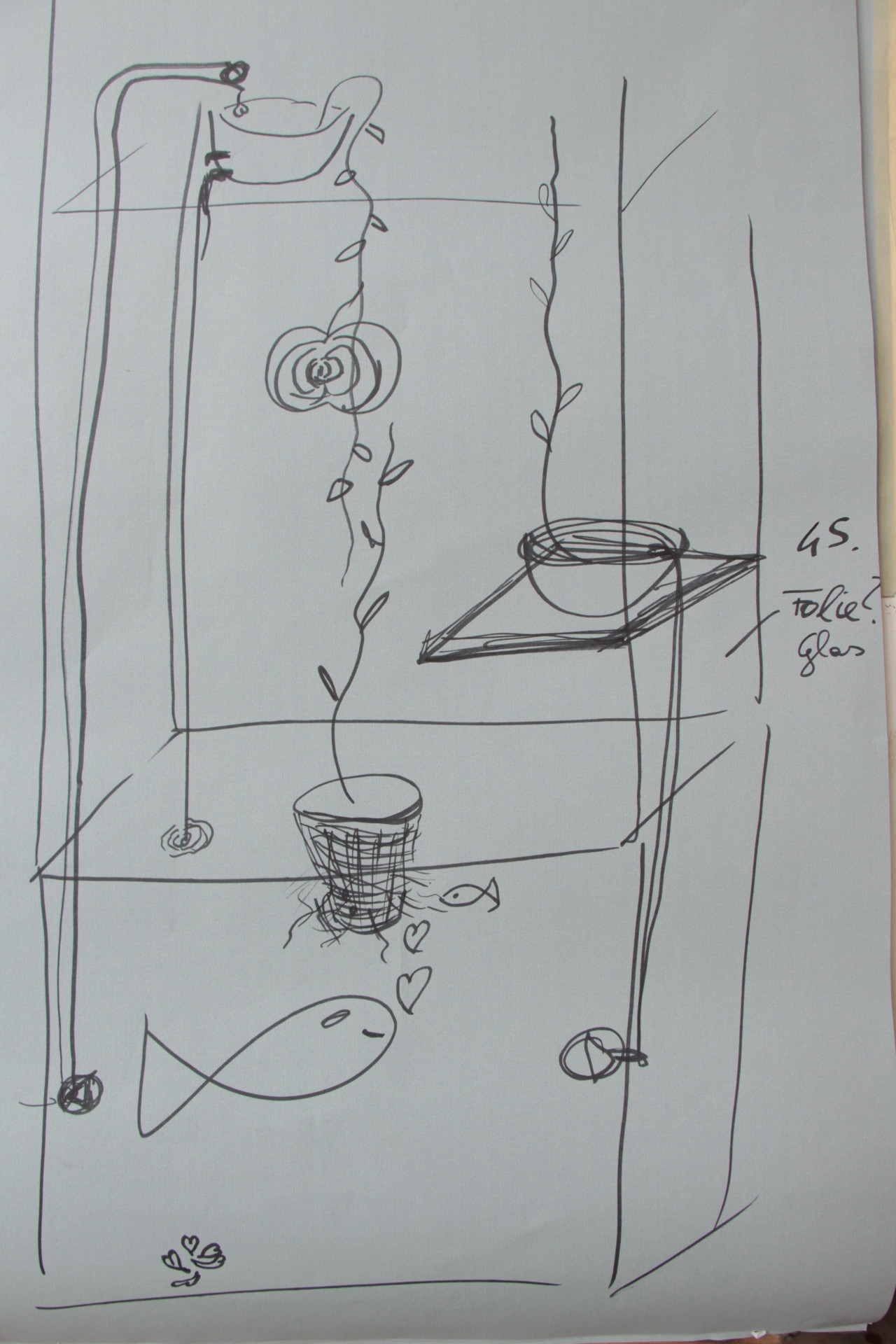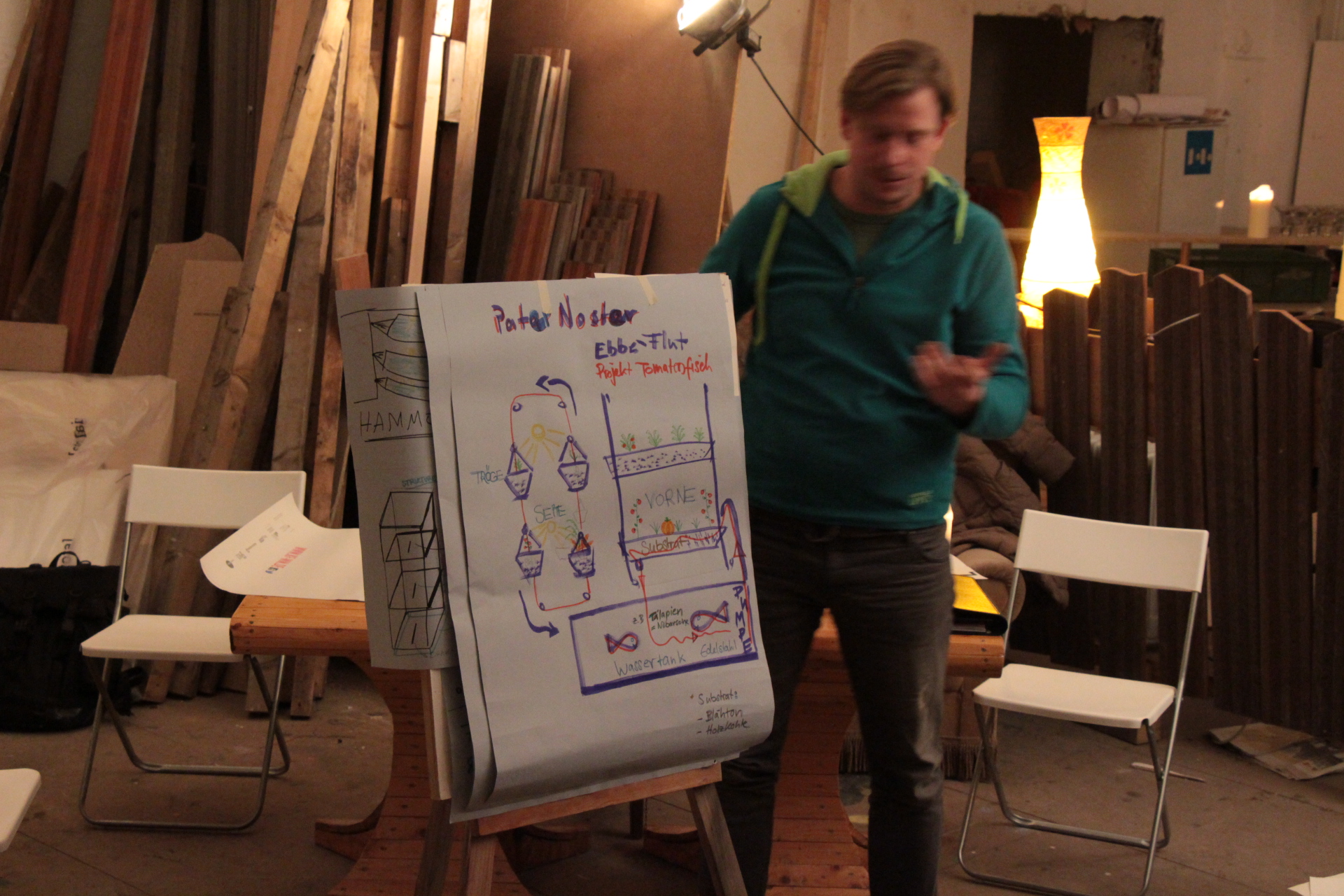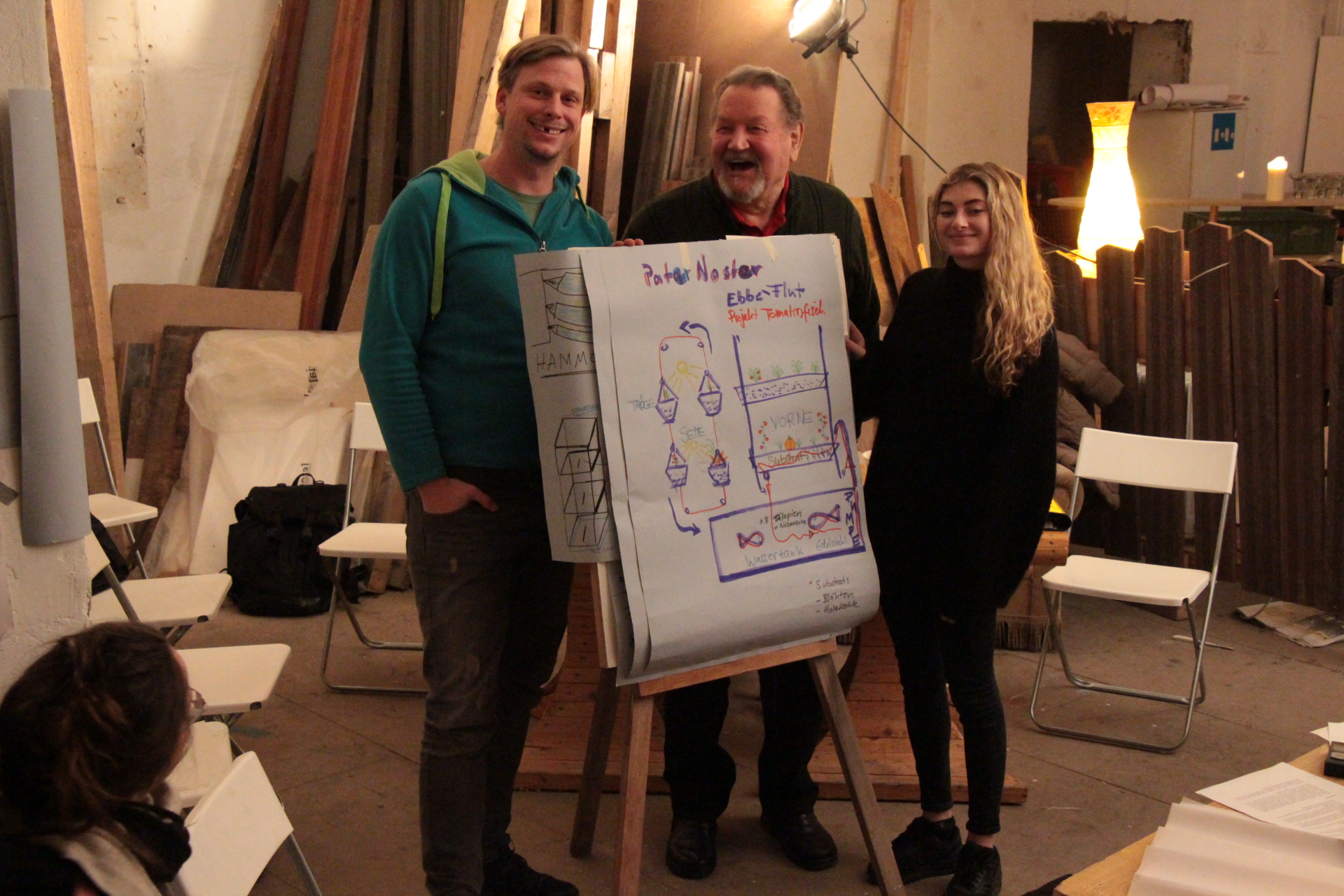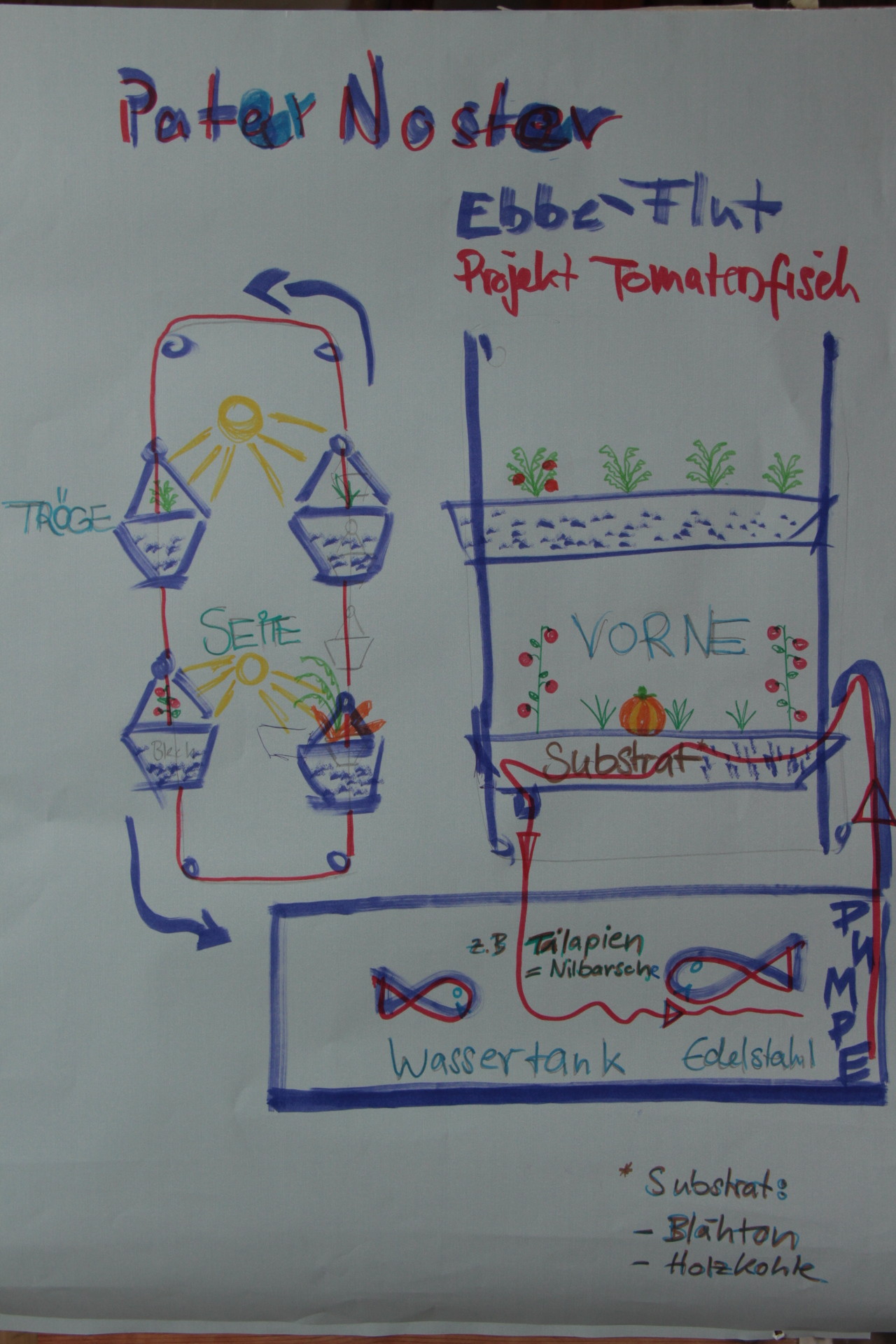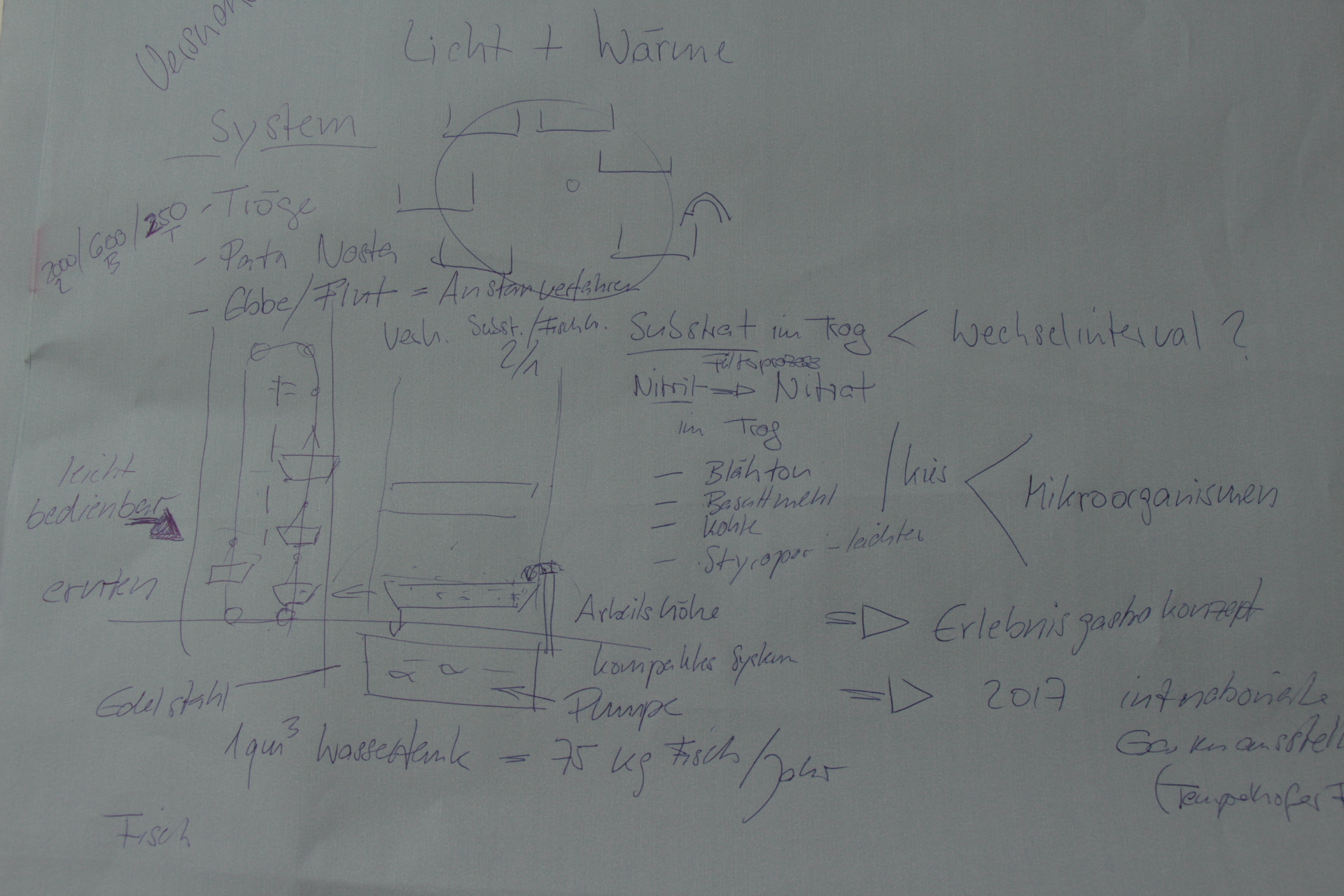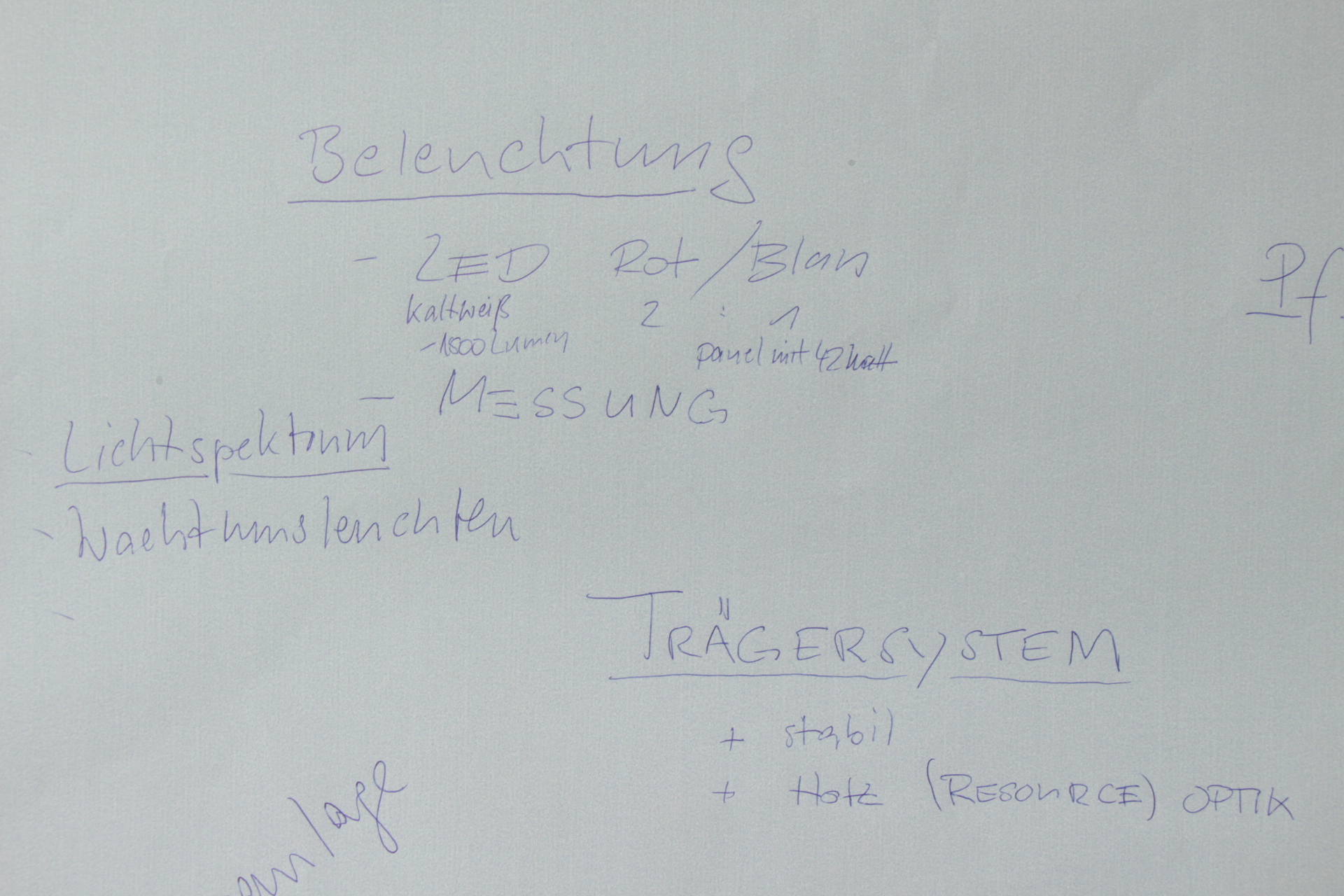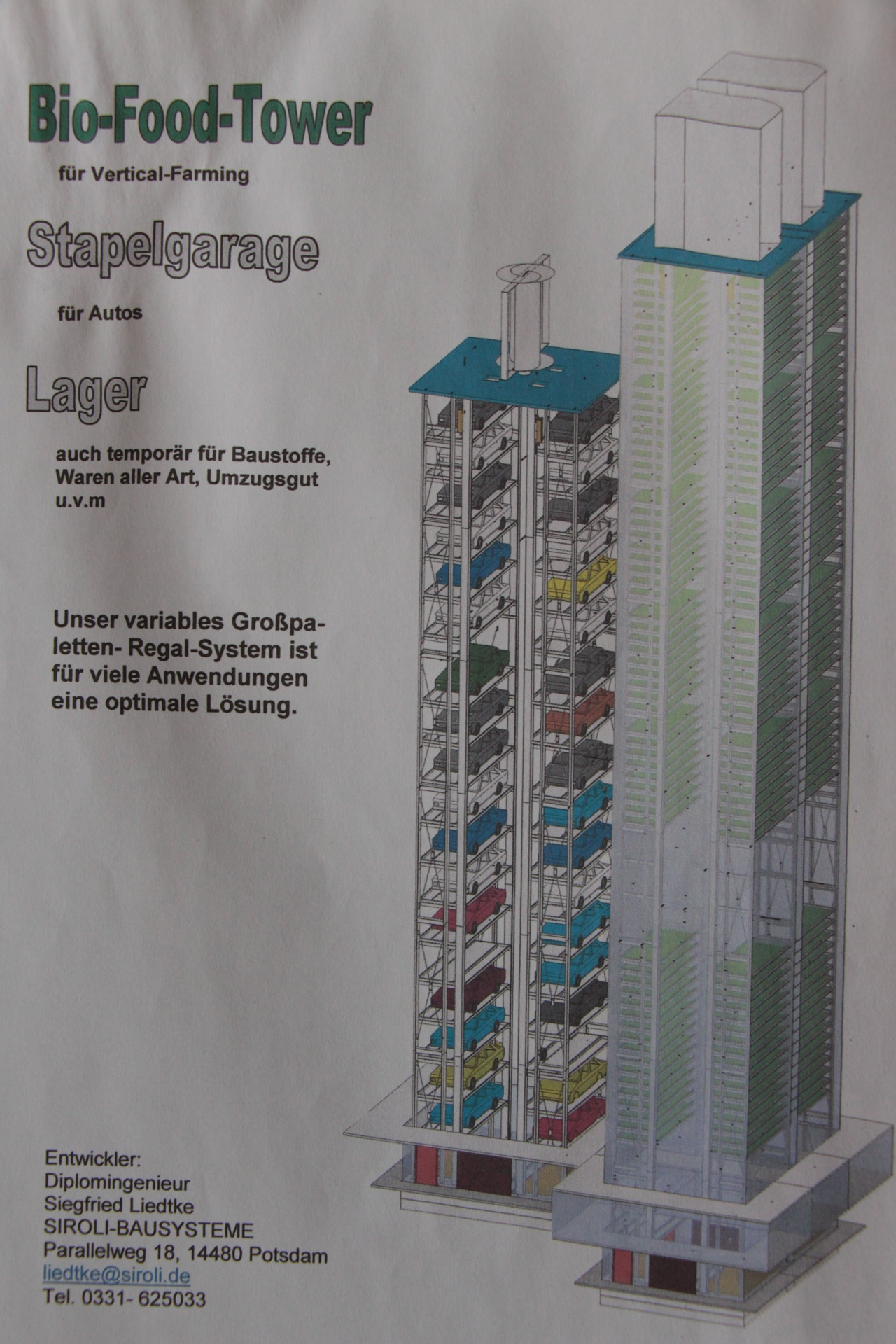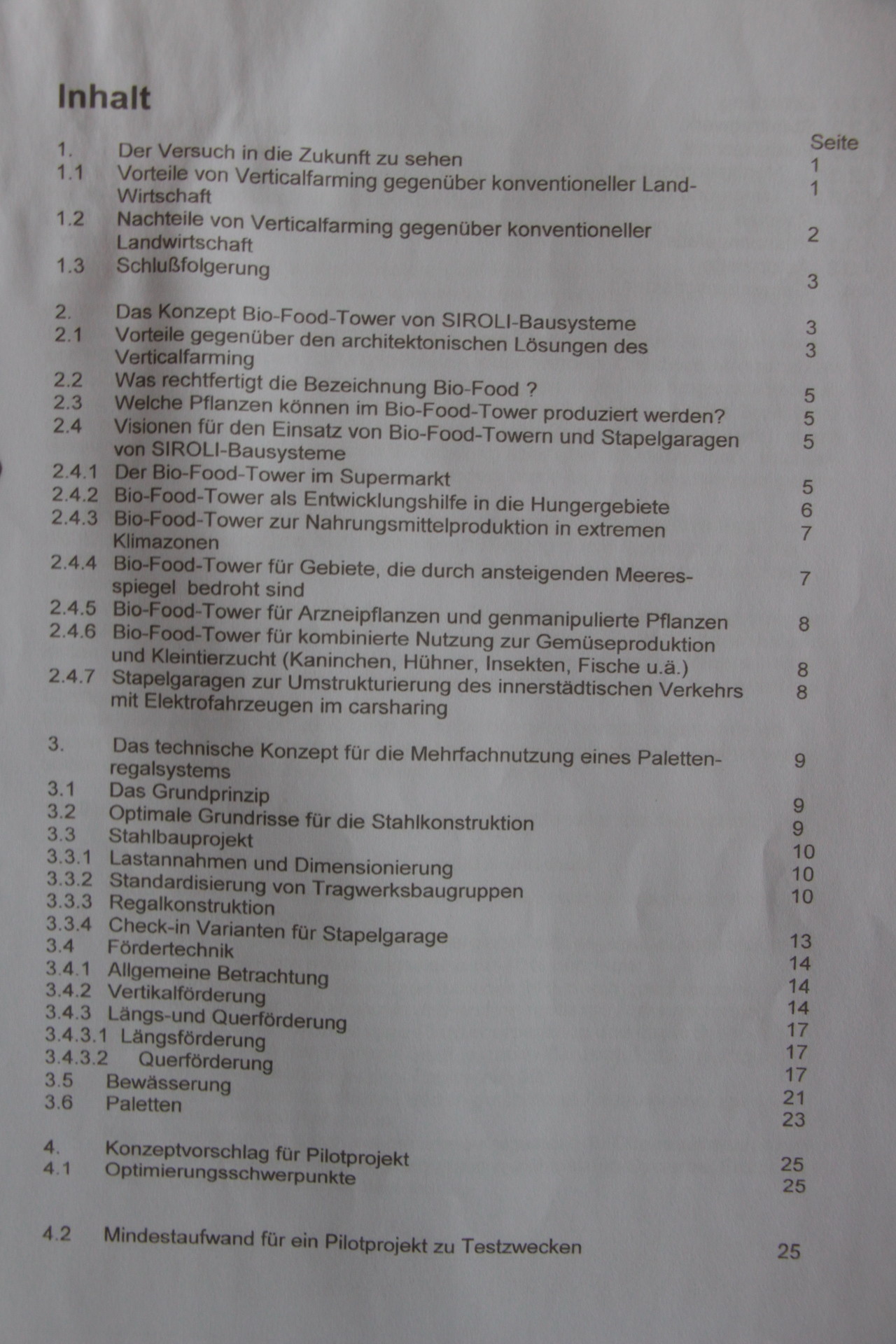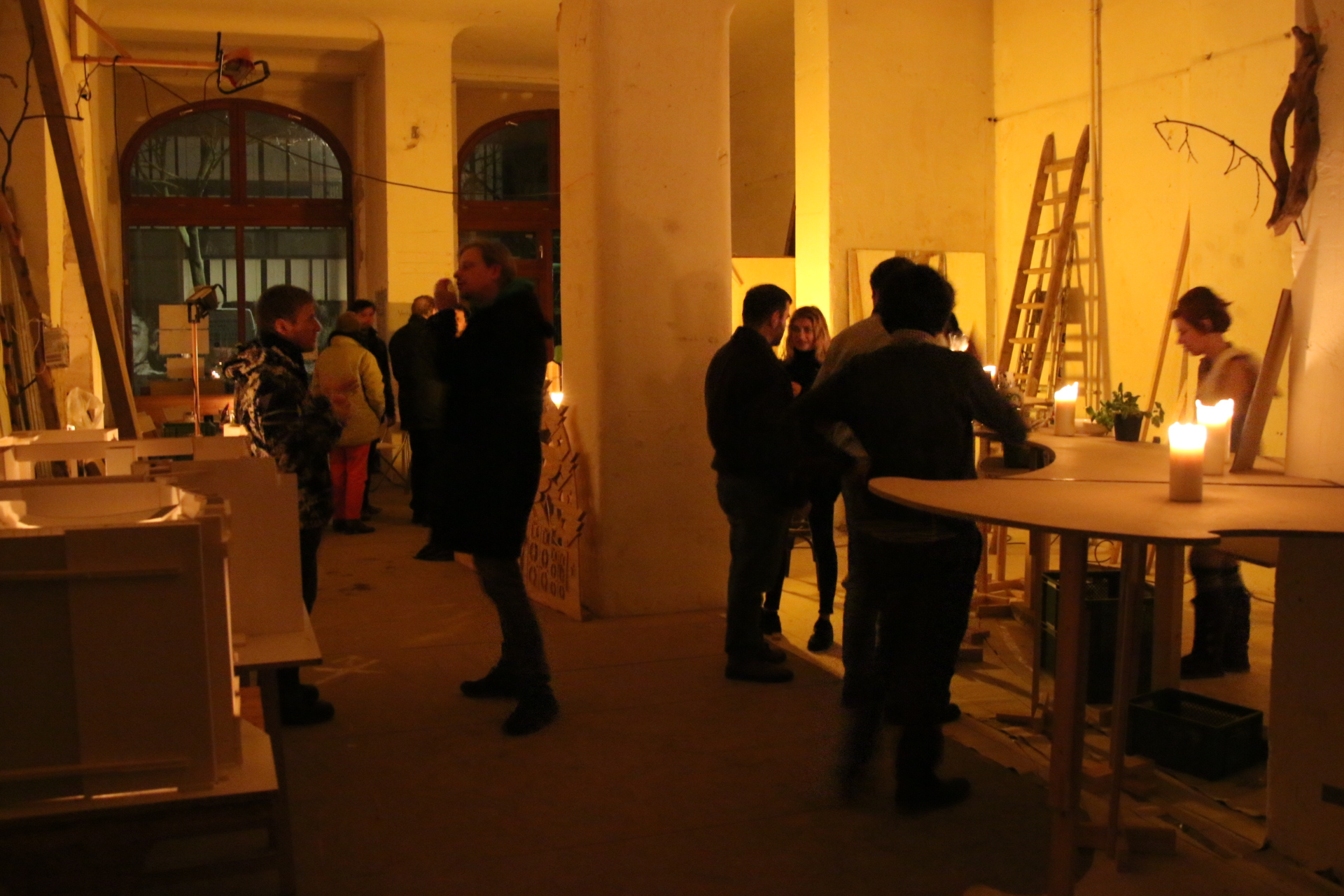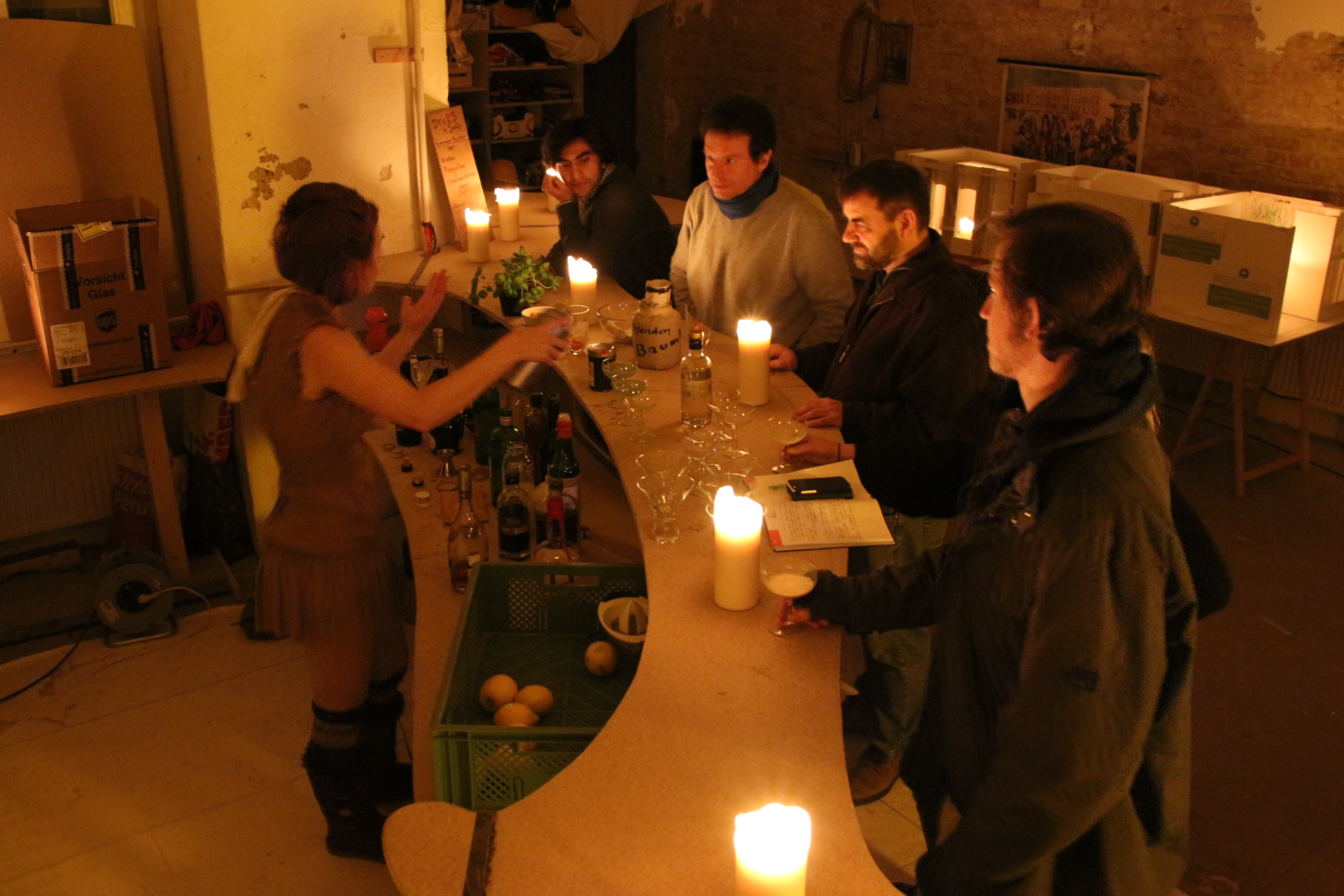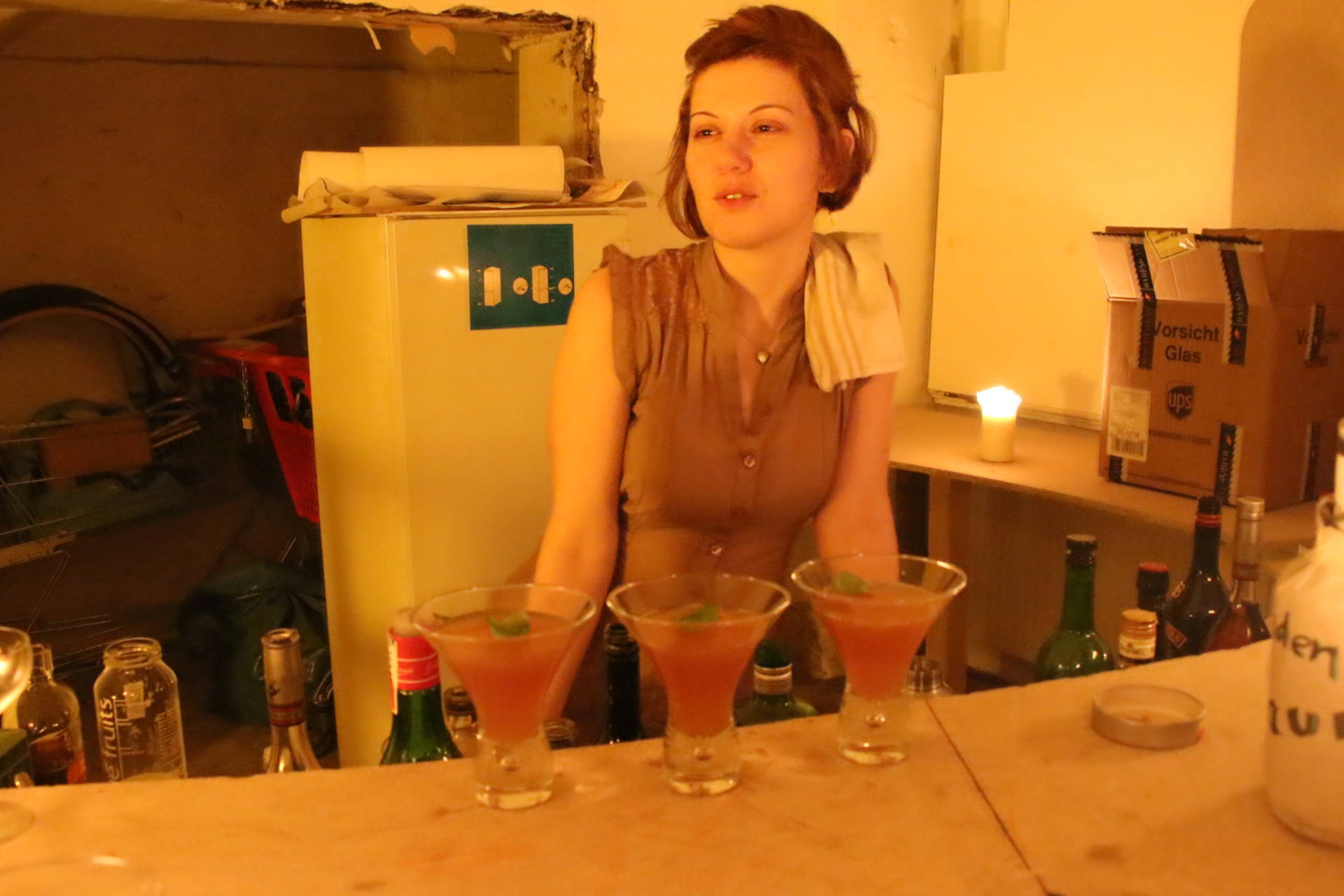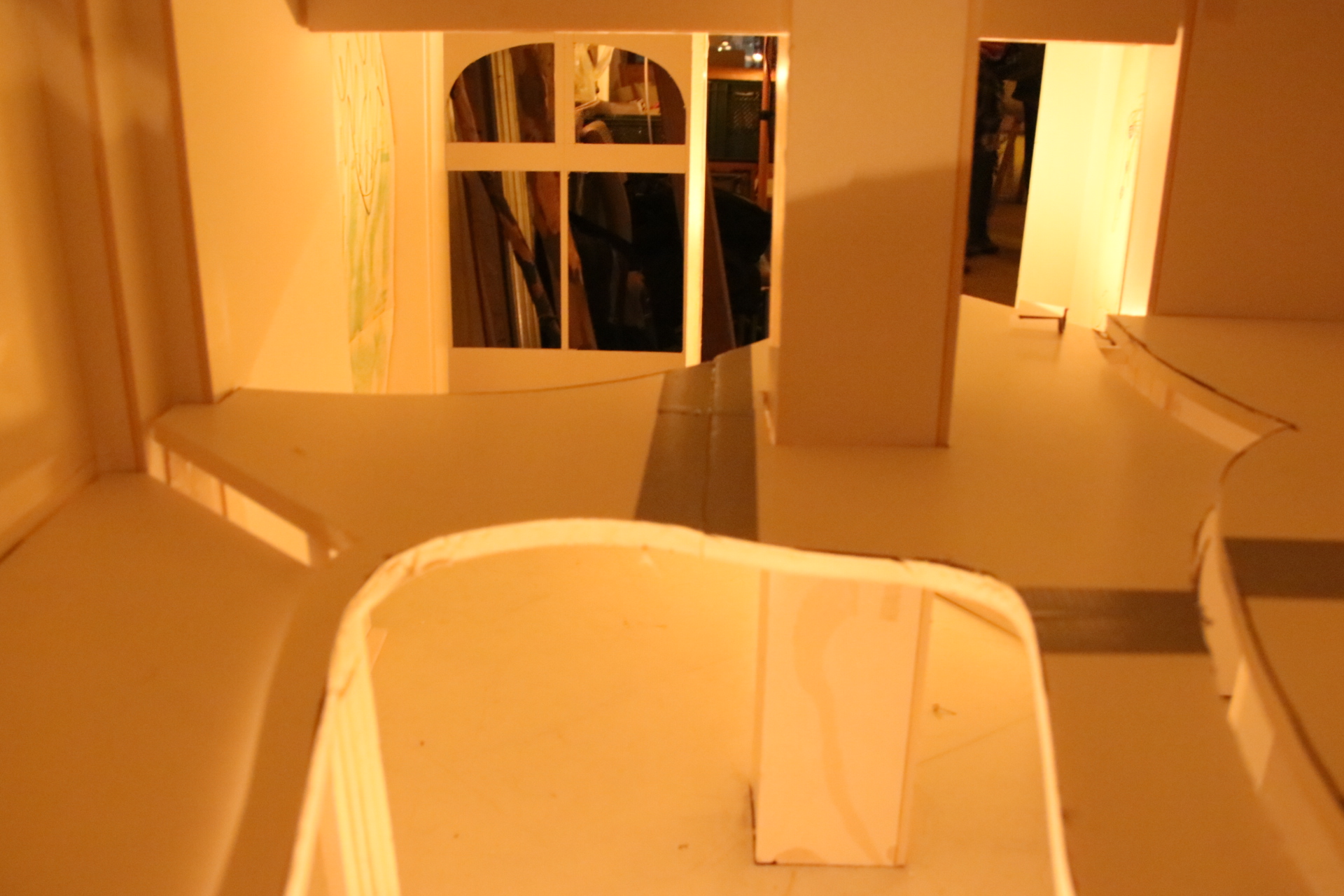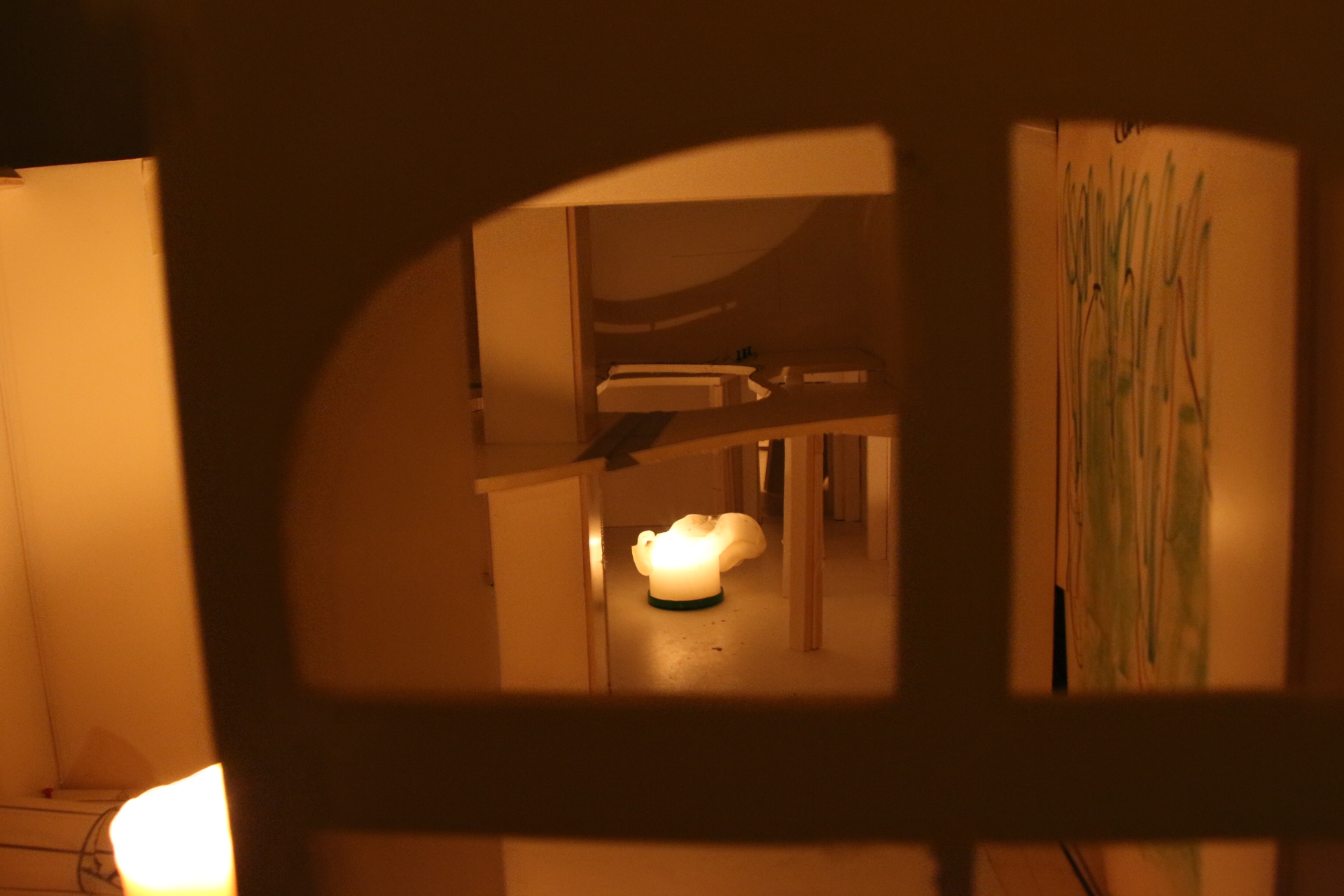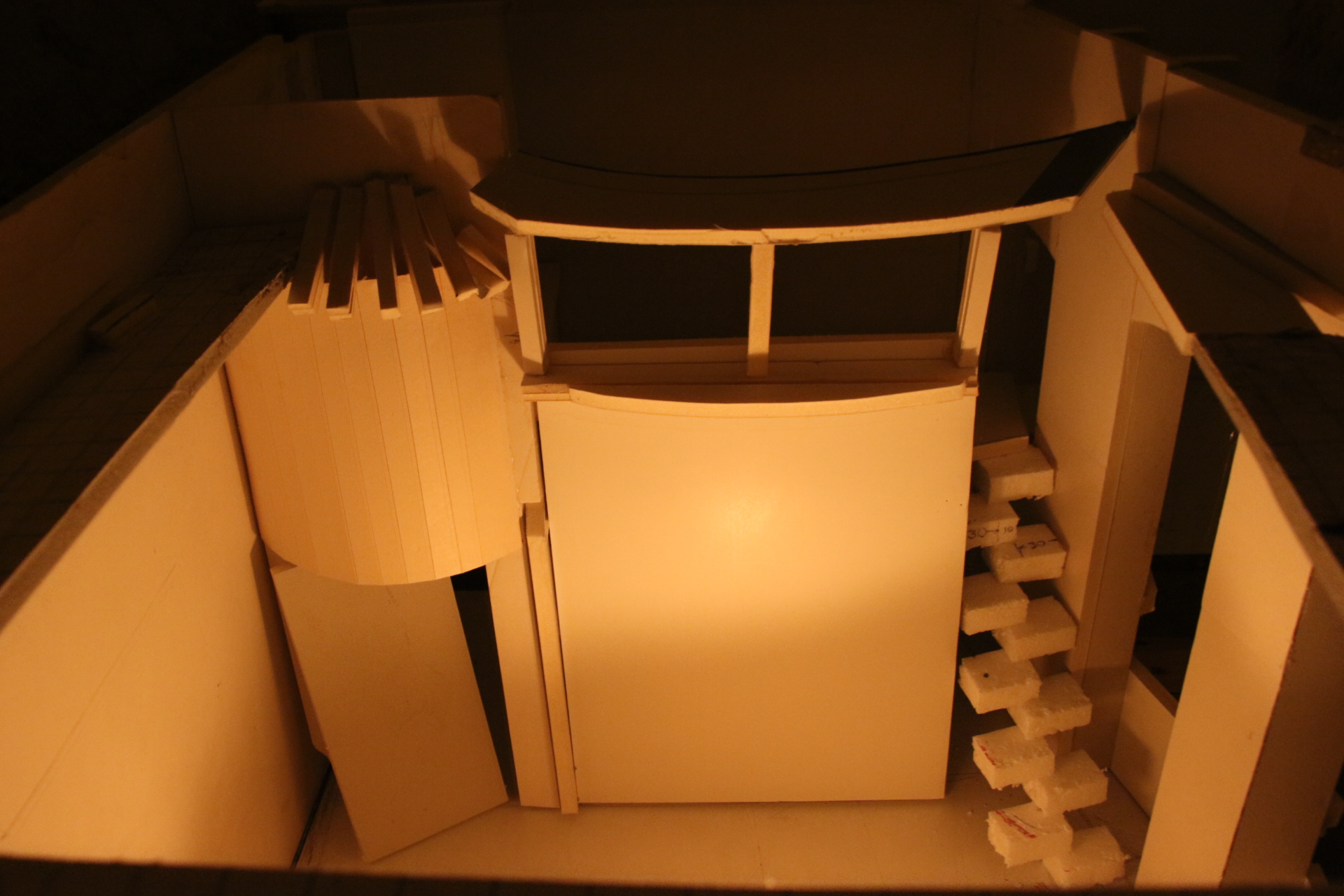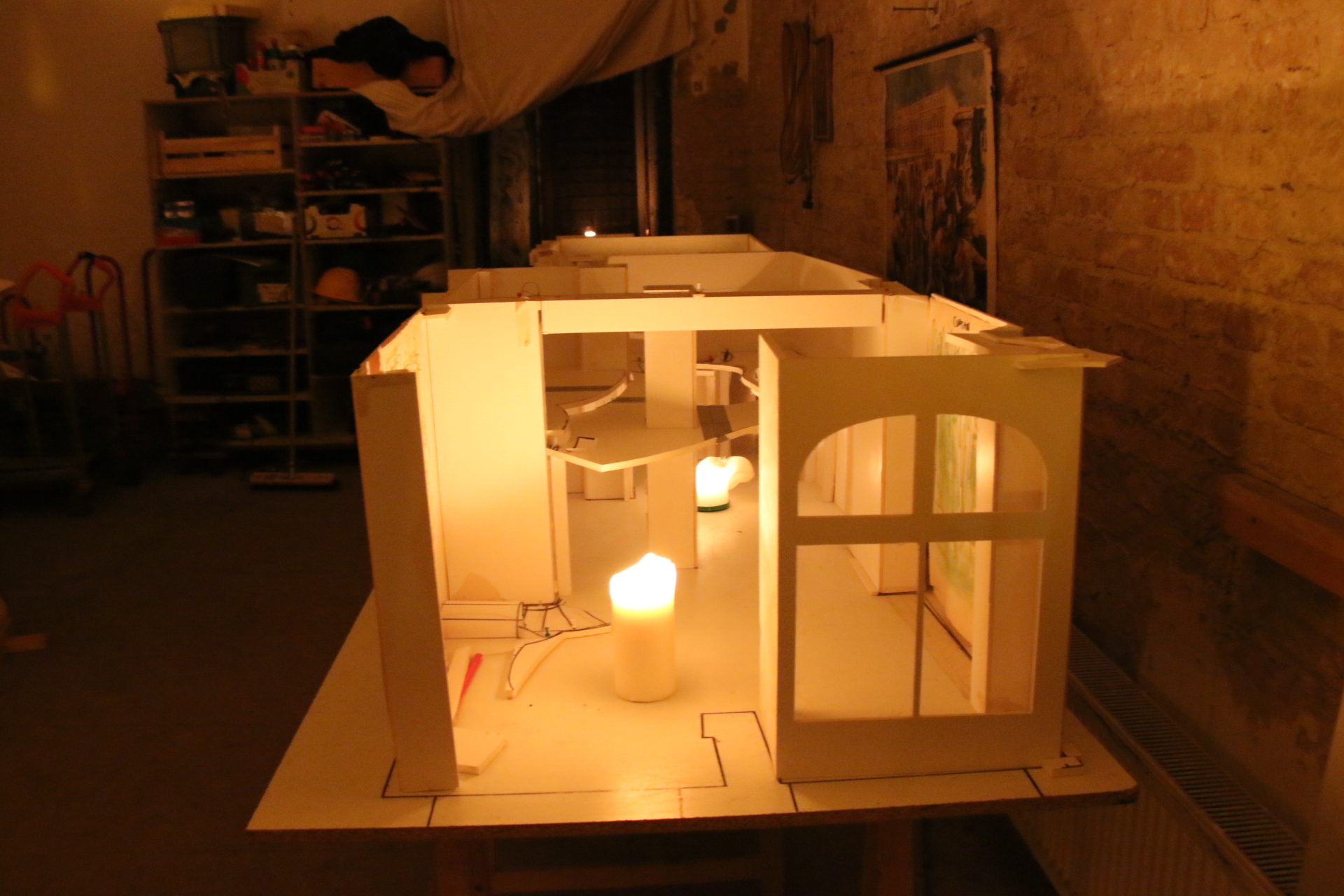[:de]Beim dritten Planungstreffen haben wir drei Systeme fürs Prototyping festgelegt: Boden, Hydroponik und Aquaponik. Unser viertes Treffen findet am 11. Februar um 19:00 Uhr im Baumhaus statt. Wir beginnen jetzt den Prototypenprozess und bitten an der Mitarbeit interessierte Gruppenmitglieder und Personen, etwas zu recherchieren und die benötigten Ressourcen und Materialien zu benennen (bitte nennt auch Preise und Orte, an denen die Dinge gekauft oder vergünstigt/ kostenlos gesponsert werden können). Während die Pläne von den Gruppen entwickelt werden, werden wir beginnen Materialien zu beschaffen.
20-01-2016 – Planungstreffen #3 für den vertikalen Garten und Permakultur im Baumhaus
Draußen war die Nacht frostig aber innerhalb des gemütlichen Baumhausraums lassen tolle Leute und Ideen exzellente Energie fließen.
Wir haben die Planung der vertikalen Gärten und Permakultur, die an den Wänden des Baumhausraumes wachsen werden, fortgeführt. Wir hatten bereits zwei erfolgreiche Treffen, und damit eine Menge an Ideen gesammelt, von Bewässerungssystemen bis zum ästhetischen Design. Dieses dritte Treffen ging darum wie genau wir nun fortfahren sollen; wir haben uns das Ziel gesetzt, herauszufinden welche Systeme wir in den kommenden Wochen prototypen werden.
Dafür gab es viele Möglichkeiten. Wir haben uns in Gruppen aufgeteilt. Jede Gruppe erforschte eine Art von System für vertikale Gärten: das Bodensystem, das Hydroponik-System (nur mit Wasser) oder das Aquaponik-System (mit sowohl Wasser als auch Wassertieren). Unter den Gruppenmitgliedern gab es ein breites Spektrum an verschiedenen Fachbereichen und Interessen, insbesondere Leute mit Erfahrungen in der Permakultur, vertikalen Gärten und Aquaponik, und jeder hat Ideen eingebracht! Bedacht wurde wie und mit welchen Materialien sie gebaut werden sollen, wie nachhaltig und kostengünstig sie sind und wie sie aussehen sollen.
Die Gruppe, die sich mit dem Bodensystem beschäftigt hat, ist auf viele erfinderische Ideen gekommen. Zum Beispiel, Hängematten als Pflanzenbeete und einen vertikalen Gartenturm, der auch als Wurmkompostierungssystem fungiert (Küchenabfälle werden Wurmkompost, der zu den besten organischen Düngern der Welt gehört!). Vorteile eines Bodensystems sind, dass es 100% organisch und wirklich nachhaltig wäre und den Grundsätze der Permakultur folgen würde; Abfallstoffe werden als Nährstoffe wiederverwertet und das Zusammenleben von mehreren Spezies wird so miteinander kombiniert.
Die Hydroponik-Gruppe hat geplant einen 4m² vertikalen Garten an einer Wand zu installieren, komplett mit einem Tank, mehreren Tropfschläuchen, einem Holzträger und Steinwolle um den Pflanzen Halt zu geben. Mit diesem wassereffizienten System könnten wir wirklich etwas Schönes schaffen; wir haben die Möglichkeit mit Pflanzen mit verschiedenen Farben und Texturen zu experimentieren. Andererseits gibt es mit diesem System eine lange Etablierungsphase weil die Pflanzen ins System wirklich hineinwachsen müssen.
Das Aquaponik-System funktioniert so, dass Wassertiere und Hydroponik kombiniert werden um voneinander zu profitieren. Vereinfacht gesagt wird das Wasser aus einem Fischtank (Aquakultur) auf die per Hydrokultur betriebenen Pflanzenbeete gepumpt. Das Wasser enthält Kot der Fische. In der Hydrokultur lebende Bakterien säubern das belastete Fischwasser. Die umgewandelten Nährstoffe sind danach für das Wachstum der Pflanzen verfügbar. Das Wasser fließt vom Pflanzenbeet wieder zurück in den Fischtank, wo der Kreislauf von vorne beginnt. Eine Aquaponik-Gruppe hat ein System entworfen, in dem Pflanzen sowohl von oben als auch unten im Aquarium bewässert werden können. Ein ‚Paternoster’ Bewässerungssystem wurde von einer anderen Gruppe entworfen. An ein vertikales, zirkuläres Förderband werden Tröge gehängt, die sich jede Stunde ein Stück weiter drehen um bewässert zu werden. Ein Vorteil dieses System ist, dass Pflanzen, die verschiedene Nährstoffe brauchen, in verschiedenen Trögen getrennt und dementsprechend bewässert werden können. Es besteht auch kein Bedarf emporklettern zu müssen um Pflanzen zu pflegen; mit diesem System kann man die Höhe der Tröge nach Belieben ändern.
Nachdem alle diese Ideen dem Rest der Gruppe präsentiert wurden, war Zeit für einen Plausch und einen leckeren Cocktail, die an unserem Bar-Prototyp von der Sarah (The Wedding Space) gemixt wurden.
20-01-2016 – Vertical Garden and Permaculture Planning Meeting #3
The night outside was frosty but inside the cosy Baumhaus space the air was warmly buzzing with good energy, groovy people and great ideas…
We were continuing to plan the vertical and permaculture gardens to grow on the walls of Das Baumhaus. After two productive planning meetings, we now had plenty of ideas for everything from watering systems to aesthetic design. This third meeting was all about moving forward; we set a goal to work out which systems we wanted to prototype in the coming weeks.
The options were vast. So we split into working groups, each to explore a different support system for vertical gardening: the soil system, the hydroponics system (water only) and the aquaponics system (water and aquatic animals). With people coming from a variety of disciplines and interest areas, each offering their own valuable input, it made for some very interesting discussion. Between us all, we had a lot of experience of permaculture, building vertical gardens and working with aquaponics! We considered how, and the materials needed, to build each system, as well as how sustainable and price efficient they each were, and sketched out some designs.
The team working on soil systems came up with some very innovative ideas, including stringing up plant beds in hammocks and a vertical tower garden that also functions as a vermicomposting system (scraps from the kitchen with added worms create a great organic fertiliser and soil amendment!). Benefits of a soil system are that it would be 100% organic, would support principles of permaculture in that species within the ecosystem benefit each other and would be truly sustainable – waste products can be recycled as nutrients for other plants in the Baumhaus.
The hydroponics group planned to build a living wall, complete with tank, multiple dripping watering lines, wooden frame and a rockwool rooting for the plants, covering a 4x4m wall in the space. This system is water-efficient (and it waters itself automatically) and has the potential to be very aesthetically pleasing, giving us the chance to play with different coloured and textured plants. On the other hand, it would take a while to get this system going as the plants are installed and then must be allowed to grow into the wall.
The aquaponics system works on the basis that aquatic animals, in this case fish, and hydroponics exist side by side, in a mutually beneficial relationship. The fish faeces in the water used to irrigate plants provides them with essential nutrients. The plants filter the water, in turn, and thus maintain a suitable habitat for the fish. One aquaponics group focused on the idea of plants having access to water both above and below the water of the fish tank. The other group designed a ‘Paternoster’ style system. Plant baskets are hung along a vertical, circular conveyer belt, which turns a bit more each hour (or any given time interval) to allow each plant basket to be watered. Whilst the circuit is stationary, the basket at the watering station is allowed to flood, then drain out at a slower rate than it was watered. This ensures nutrients within the water are evenly distributed. A benefit of this system is that plants demanding different mixes of nutrients can be separated by basket and watered accordingly. When plants need tending to or harvesting, there is also no need to climb up to the baskets. This system has the convenience of being able to alter the heights of plant baskets as desired.
After all these ideas were presented to the rest of the group, we hung out, chatting, networking and drinking delicious cocktails mixed at our bar prototype by the lovely Sarah from ‘The Wedding Space’.
